
Home
Project background
Context mapping
Ideation
Co-design
Conceptualization
Evaluation
Contact
Introducing
Hemi Board
Learn more

Home
Project background
Context mapping
Ideation
Co-design
Conceptualization
Evaluation
Contact
Introducing
Hemi Board
Learn more

Home
Project background
Context mapping
Ideation
Co-design
Conceptualization
Evaluation
Contact

Introducing
Hemi Board
Learn more
Design challenge v1
The to be designed product for the participant shall improve the accuracy,
stability, and strength of the hand in indivuduals affected by hemiparesis.
Design challenge v2
The to-be-designed cutting board for the participant shall improve and prioritise the accuracy, stability, and strength of individuals with hemiparesis, focussing on ergonomics and their specific capabilities.
Design challenge v3
...
Why for people with hemiparesis?
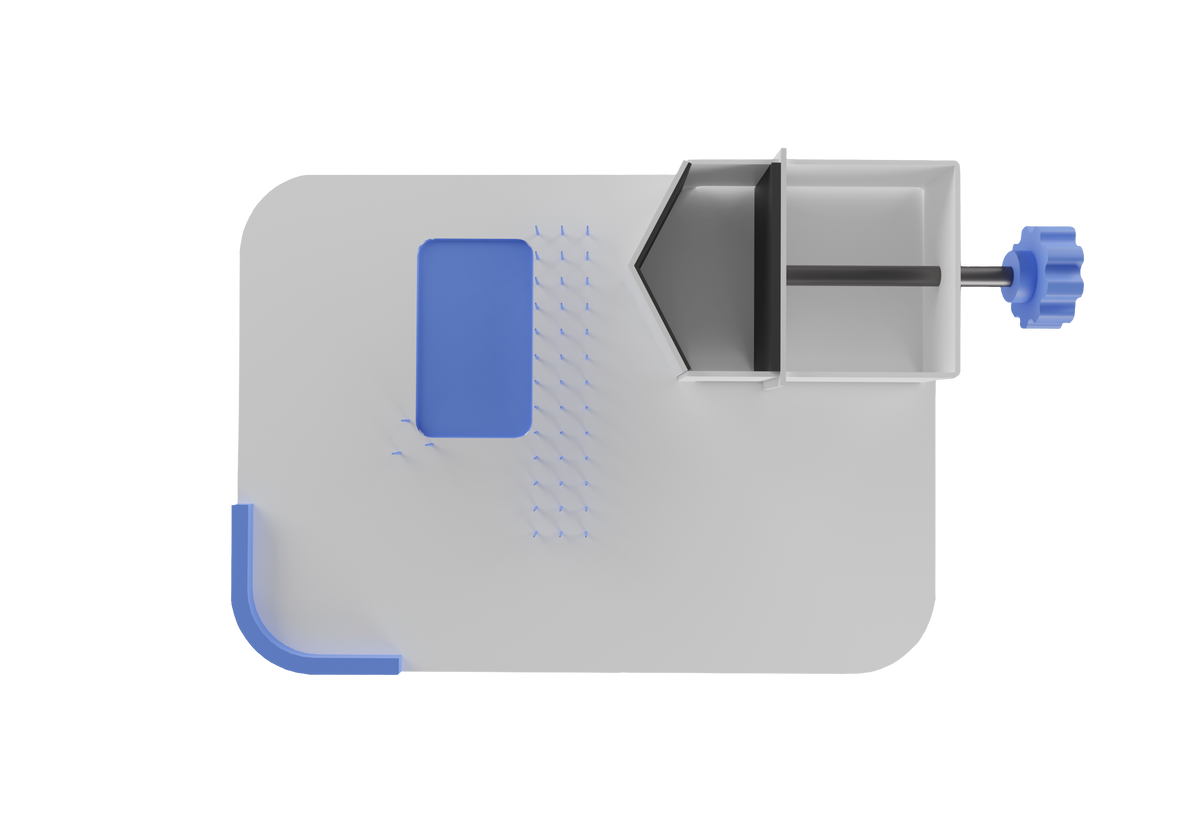
Cutting board fit to be used with one hand. Helps open cans and jars. Keeps food in place when cutting. Fit for any fruit and vegetable.

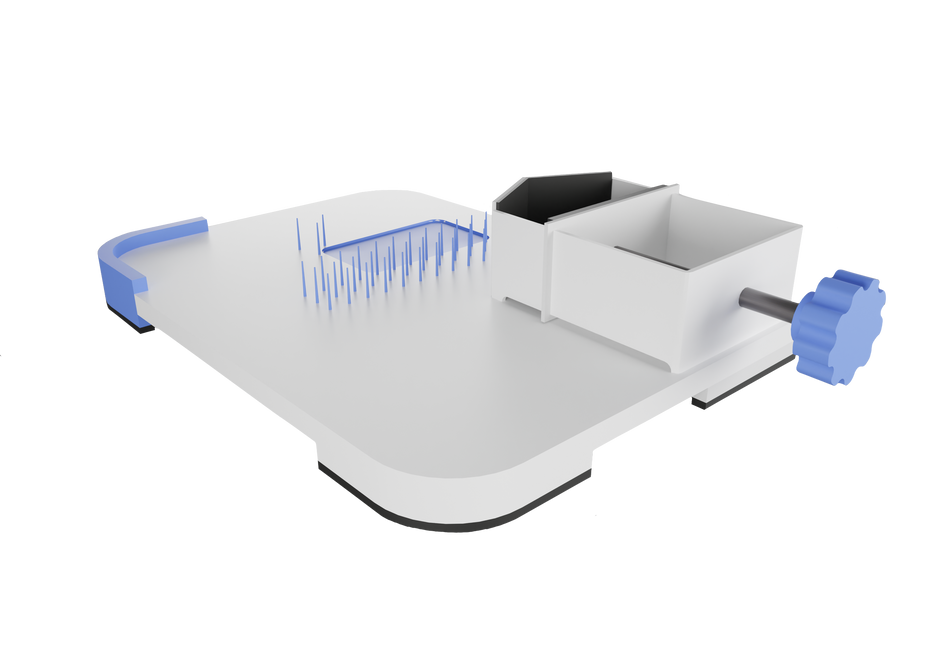
Animation
Part names
General information

Home
Project background
Context mapping
Ideation
Co-design
Conceptualization
Evaluation
Introducing
Hemi Board

Home
Project background
Context mapping
Ideation
Co-design
Conceptualization
Evaluation
Project background
Module 7's, ‘Designing for Specific Users’ project helps project groups work for and together with a participant. All participants deal with challenging situations. These challenges are addressed and alleviated by designing a new product. This product is designed together with the participant, using the method of co-design. To come to the final product, different phases will be completed from context mapping to co-designing, and conceptualization. At the end, the participant is provided with a prototype that will help reduce daily challenges.
Phase 3
Phase 2
Context mapping
Co-design
Conceptualization
Phase 1

Home
Project background
Context mapping
Ideation
Co-design
Conceptualization
Evaluation
Context mapping
To better understand the daily challenges of Aziz, context mapping has to be carried out...
Visit 1
Visit 2
Interview
Getting to know each other
Home safari
Walk-through through house

Home
Project background
Context mapping
Ideation
Co-design
Conceptualization
Evaluation
Visit 1 - Interview
To better understand the daily challenges of Aziz, context mapping has to be carried out...
Visual summary
Hemiparesis
Persona
Academic articles
Visual summary
After conducting the interview with Aziz, a visual summary was made of his life story, in which his story is mainly explained by pictures.
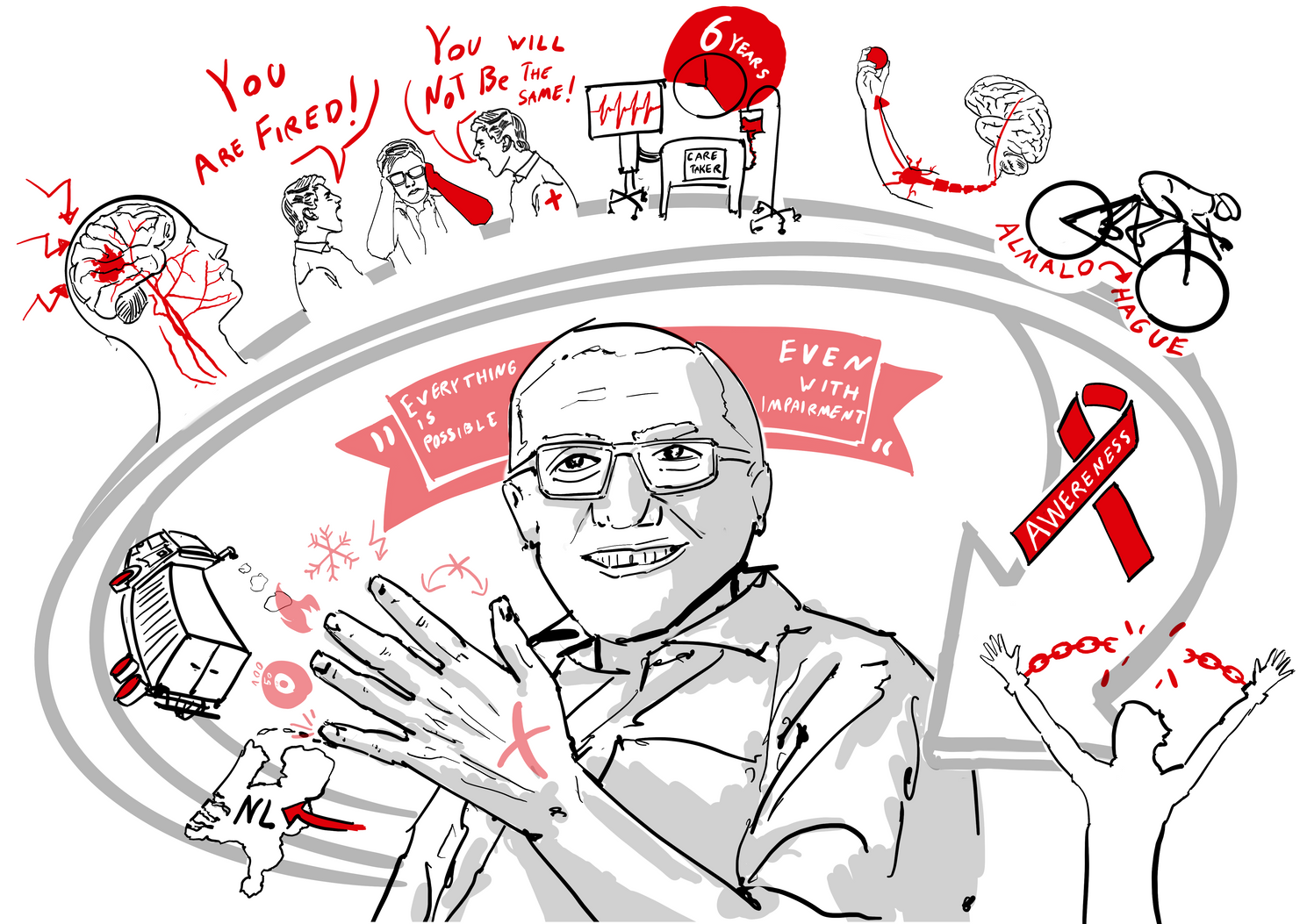
Learn more
Visual note explanation
Aziz was born in Turkey, but moved to the Netherlands later on in his life. In the Netherlands, he became a truck driver, and he worked in a factory afterwards.
In 2013 Aziz got a brain embolism and lay on the floor for 24 hours. The embolism caused hemiparesis, which is weakness in one half of the body. In Aziz his case, this resulted in paralysis in the complete left side of his body. According to doctors, he was bedridden. The negative attitude of the doctors made him motivated to get better. After six years in bed, he was finally able to make small movements in his arm and hand again. Now, he can raise his arm partially via his shoulder. The doctors even offered to amputate his arm since its state “couldn’t improve”. It felt like he had won in life the first time he could move his hands again.
Currently, Aziz cannot work, since he has been declined. His main hobbies are cycling and walking. To raise attention for his condition he decided to bike to Den Haag. To support others, he took the task upon himself to become the ambassador for Lyme, of language, for the UN for the Rights of the Disabled, and a Spiegelgroep member from the Ministry of Health, Welfare and Sport.
The left part of his body is partially paralyzed after a partial recovery. The shoulder makes for partial movements. The wrist does not have enough strength to keep the hand in a stable position. The accuracy, opening, and closing of his hand form a challenge. The poor temperature regulation in his left arm and hand is not optimal and causes uncomfortable situations.
What is hemiparesis?
From the interview with Aziz, he indicated that he had hemiparesis on the left side of his body. An explanation of this condition can be found below.

The participant linked to group 12, Aziz, has a special condition called hemiparesis. Hemiparesis is a condition where one entire side of a person’s body is weak. Hemiparesis reaches from weakness on one side of the body to complete paralysis of half the body (hemiplegia). The condition is caused by: trauma, tumours, or a stroke. In some cases, hemiparesis can be treated or cured. Many conditions like spinal cord or traumatic brain injuries result in permanent damage to the nervous system. This condition has a great effect on everyday life. Some cannot live independently as a result. Daily tasks become difficult, and new products might be needed to fulfil certain needs.
Persona
In Industrial Design Engineering it is a common practice to create a persona, which is a person that would represent and help to understand the bigger target group you are aiming to design for. Since this project is for a specific user, a persona of Aziz has been created, helping in creating a better user experience.
Aziz Koca
Age: 62
A resilient person, who lives alone and tries to maintain his independence while having hemiparesis affecting the left side of his body. Due to his condition, Aziz tries to contribute to society. Currently, he fights for the rights of disabled people and spends most of his time at home. Seeing progression gives him hope regarding recovery.
Motivations
- Independence: he is deeply motivated to become as mobile and independent as possible.
- Advocacy: he focuses on increasing the awareness and the rights of people like him.
Frustrations
- Perceived disability: he does not like the disabled stamp society gives him and wants to be seen as a normal individual
- Lack of trust: he struggles to trust doctors as a consequence of their negativity.
- Limited mobility: he has limitations on the left side of his body, especially his left arm causes difficulty.
- Independence: Aziz needs help to change his bedsheets, while he wants to become fully independent.
Goals
- Campaign: he is occupied with launching ‘Fietsen met Aziz’ to create awareness for people with disabilities
- Improvement: he aims to improve his mobility and independence. He takes rehabilitation every week to proceed with this goal
- Moving: he wants to move back to Eindhoven since everyone in Almelo sees him as ‘disabled’. Eindhoven gives him more possibilities for future occupations.
Academic articles research
...

Preliminary Assessment of Hand and Arm Exoskeleton for Enabling Bimanual Tasks for Individuals With Hemiparesis
- Arm Function: Half of stroke survivors lose arm function.
- Long-Term Impact: Three-fourths of hemiparesis patients face arm function issues after four years.
- Exoskeleton Types: Therapeutic and assistive exoskeletons aid movement.
- Power Exoskeletons: Pneumatic and EMG systems assist arm movement.
- Design: Optimized size and features enhance mobility
Search report
Academic articles research

Development of a wearable cybernic globe that enables object grasping and gripping force measurement with open finger pad
- Tendon driven systems.
- Fingertip sensor.
- Wire-length adjustment mechanism.
- Calibration system.
- The torque exerted by the motor is controlled by PID control.
- Covers over %80 of the maximum functional joint motion range.
Search report
Academic article research

A Compact and Lightweight Rehabilitative Exoskeleton to Restore Grasping Functions for People with Hand Paralysis
- Design: Prioritize mechanical structure and kinematic analysis with rigid connections.
- Actuators:
- Pneumatic: Lightweight, high torque, complex control, low portability.
- Hydraulic: High torque, low accuracy, prone to lubricant contamination.
- Grasping: Methods cover 80% of tasks with palmar pinch, medium wrap, parallel extension, and lateral pinch.
- Hand Exoskeletons: Weigh 300g to 5kg, use V-shaped springs for finger motion, EMG-controlled.
Search report

Home
Project background
Context mapping
Ideation
Co-design
Conceptualization
Evaluation
Literature Research
Feedback
Worked Well:
- Presentation with good structure and problem definition
- Sketches with insights
- Good to know about the participant and his goals
- Easy to follow
- Nice research papers explanation
Did not Work Well:
- Only research on hand and arm exoskeletons but not other products
- There was confusion about how he is paralyzed and still walk
- Including a portrait can be a problem
- A lot of focus on the exoskeleton but not enough look into rehabilitation option
- Why focus on the hand but not the elbow.
What is missing and what to do next according to the feedback:
- New mechanisms, sensors etc can be searched for the rehabilitation concept.
- Talk with him about what functions he wants to improve about his hand and arm.
Suggestions:
- Focus on key functions and not on everything that he is incapable of doing.
- Looking more products than just the exoskeletons
- Look for what tasks the participant wants to improve
- Look into other braking systems
- Look for mechanisms to help train his hand
- Look into rehabilitation options
- Think about what tasks an exoskeleton would solve and see if it takes this feeling of autonomy.
- Decide whether you want to just solve the bike or facilitate reaching and grabbing objects.
How it is implemented after the feedback:
- Several key points were selected according to his needs, wants and observations.
- More in depth look was made for rehabilitation and continued as a concept design.
- More research was done according to these keypoints and 5 of them became a concept.
- A co-design session was made to see what he wants and likes.
- Mechanisms (inc. electronic) were considered and used in a concept for rehabilitation.
Context mapping at Aziz’ house
After the first meeting with Aziz, the group was invited to his house, since explaining his daily challenges is harder than actually showing them. During the visit, a walkthrough of the house was done, to give insights into the products Aziz uses to make his daily life easier. During this meeting, Aziz showed devices he already had at home for his hand and why these devices did or did not work. The group was also allowed to test these products for themselves to see and feel what the main struggels were with these products.
Main disadvantage of hand training devices
Aziz already had several hand training devices at home, and they all have the same disadvantage when putting them on. In order to use the device, Aziz would have to lay the device on a surface, keep the device in place with his partially paralysed hand, open the velcro wristband with his fully functional hand, grab his partially paralysed hand with his fully functioning hand to position this hand onto the opened wristband, keep the ends of the wristband together with one hand and stick the velcro sides to each other. Another disadvantage of these devices was that only the closing of the hand was focussed on, and not the opening with which Aziz has the most difficulty.
Hand training devices

Different mitten configurations with zipper positions
Blue hand training device
The blue hand training device has five different cylinders, made from silicone, that can be put on each one of the fingers. While doing this, the participant indicated that the cylinders were not big enough to easily fit their fingers and that it would cost them quite some effort before even starting to use the hand training device. Or when the training was done, getting the cylinders off their fingers was also difficult. Since the silicone elastics, connected to the silicone cylinders, were quite short, the tightness was high, making it hard to make a fist out of your hand. Since this motion, of making a fist, is one of the more difficult tasks to perform for the participant, it was quite hard to even get into the position of a fist.
Hand training devices
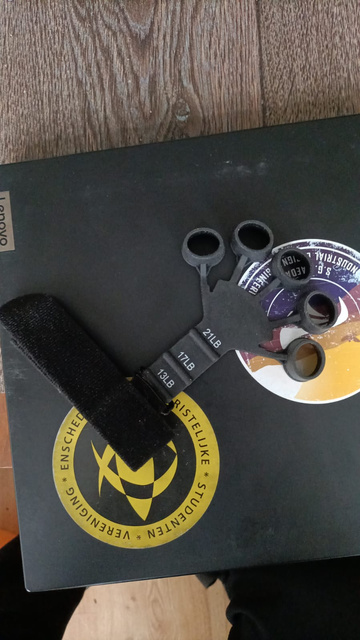
Black hand training device
In the black hand training device, one can change the weight with which they want to train. Here, the participant indicated that even the lightest weight was sometimes already too difficult for them to train with since the amount of effort that had to be put into making a fist was too high most of the time.
Hand training devices

Different mitten configurations with zipper positions
Vicloon hand and finger trainer
The Vicloon hand and finger trainer with adjustable weights, from 5 kilograms to 60 kilograms, has the same problems as the other two hand training devices, the starting weight is already too high to start the training with.
Hand training devices


Pernonally made hand training device
Next to these standard hand training devices, Aziz also bought a personally made hand training device. To make this device, they made a plastic cast which would fit perfectly on the top of the forearm of Aziz, with a foam bedding to make the cast comfortable to wear. To wear the device, one would have to tighten three different velcro strips attached to the plastic cast, and a fourth velcro strip that would cross the palm diagonally. This diagonal velcro strip can always be felt when bending the fingers. After tightening the velcro strips, every finger can be easily put in a leather cylinder, since the cylinders are quite big. These leather cylinders are attached to springs and a metal plate that is sticking out at the top of the cast hand. So when the fingers are in resting position in the hand training device, the fingers would bend upwards and not be in a neutral position, making it quite uncomfortable when keeping the fingers in that position for too long. When trying to make a fist with the fingers, the springs will act as a counterforce to help train the fingers. With this design, Aziz liked the exact fit to his situation. However, the device keeps the fingers in an unnatural position when at rest and the springs are all the same, meaning that the pinky should be as strong as the thumb for example. In real life, every finger is independent and is built differently, leading to a different strength that they can perform. Since the metal plate is sticking out so much at the top of the cast, it can be hard to use them in every daily life situation.
Self-made products by Aziz
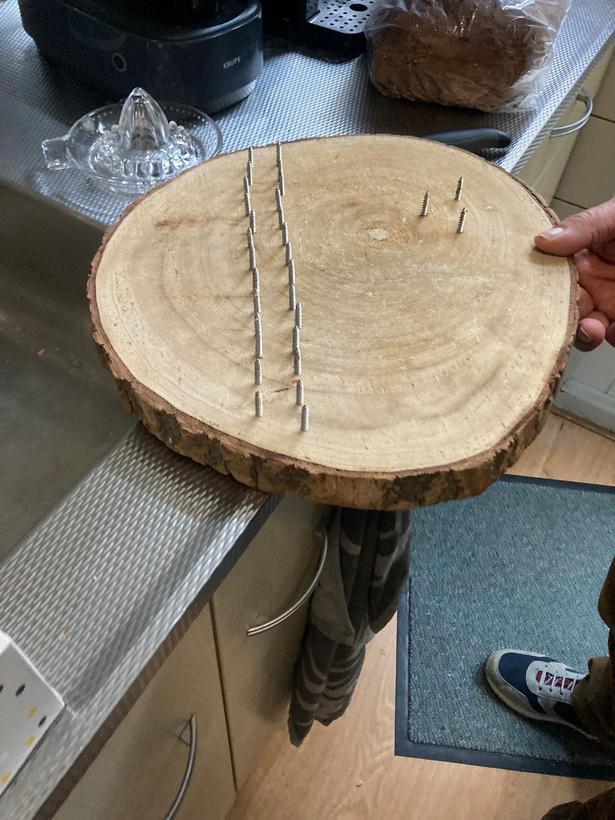
Different mitten configurations with zipper positions
Circular cutting board with screws
When walking through the kitchen, almost all the cabinets were at reachable level for them, most of them at waist height or lower, except for the cup cabinet. In the kitchen, the participant also showed a product that they made themselves, a cutting board with screws. These screws should keep the bread, fruit, vegetables, and butter in the right place when using one hand to cut them. When showcasing this self-made product, a couple of concerns were raised:
- The cutting board slips away easily
- The pointy side of the screw is sticking out, which can lead to harm of the user
- The cutting board is not universal for everything that has to be cut
- A lot of force has to be applied to cut something or to put the piece of food in place
- The screws would rust over time
- The cutting board cannot be put into the dishwasher
Self-made products by Aziz
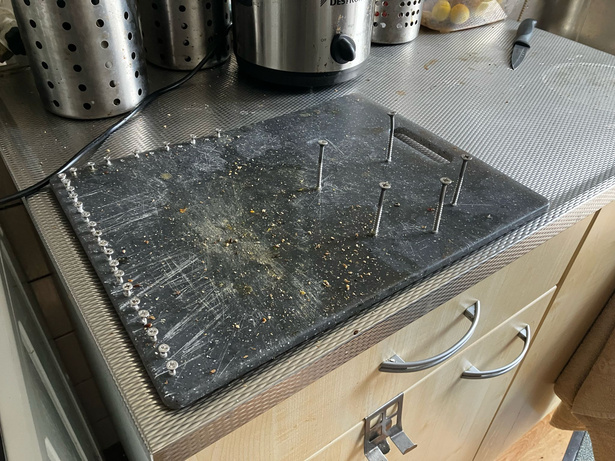
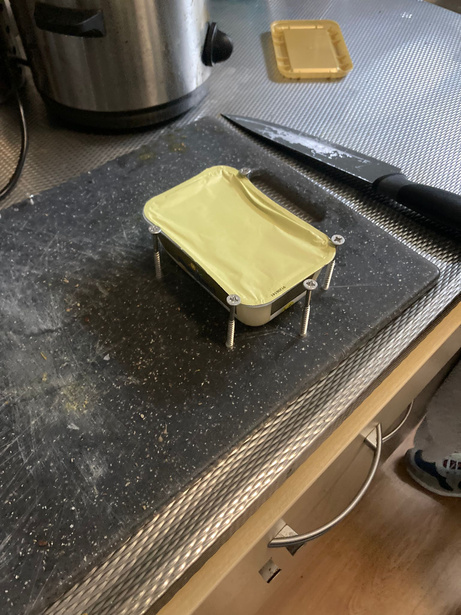
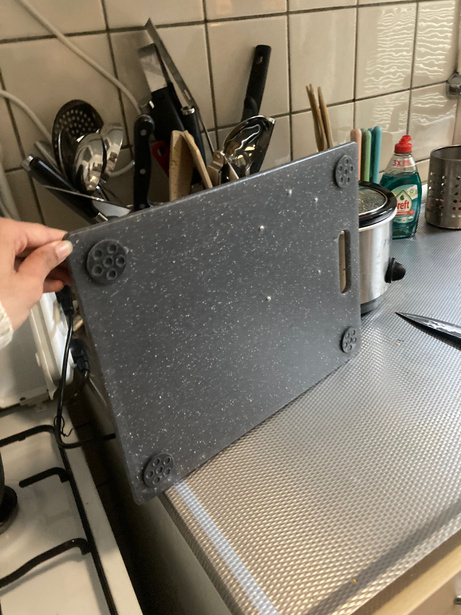
Rectangular cutting board with screws
See circular cutting board with screws
Other products used by Aziz
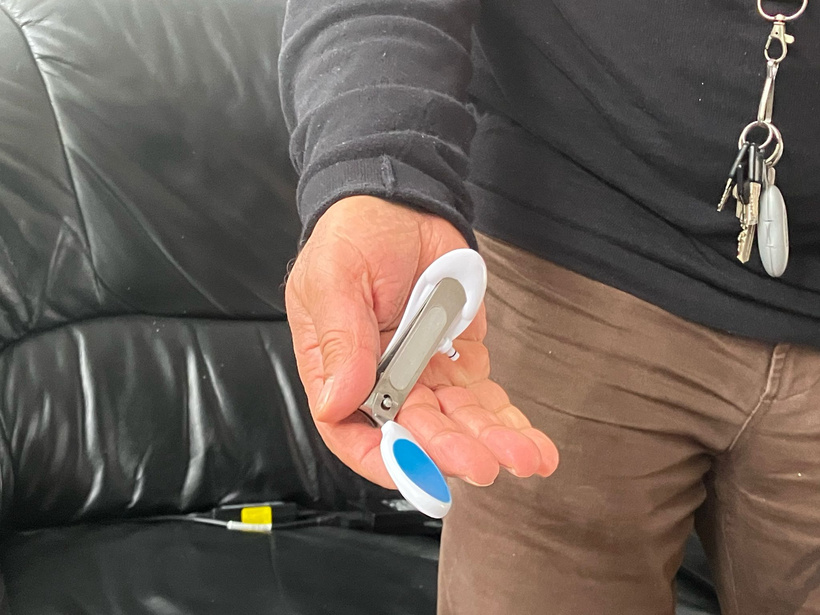
Different mitten configurations with zipper positions
Nail clippers
...
Other products used by Aziz


Shower chair and anti-slip mat
...

Home
Project background
Context mapping
Ideation
Co-design
Conceptualization
Evaluation
Visit 2
Aziz’ Attitude
Aziz was more positive than during the first meeting and had a more realistic mindset. This made it easier for the group members to discuss the expectations of both sides.
It felt like he trusted us, since he shared something personal. Before he was a truck driver as profession. He often used to be under influence, not only of alcohol but he also was addicted to cocaine. He mentioned that due to his stroke he found himself again. Before he only thought about himself. Now he also commits himself for others. He is aware that his disability limits his life in a lot of aspects, but without that event he would have been the same, only thinking about himself.
He is aware that he is one of a few, who is able to (partially) move his hand and arm again. He is very proud of the things he can do with his hand and arm. When he lifted his arm all the way up, it costed him a lot of strength and energy, it was visible on his facial expression. But also proud was visible, it was very moving. He is positive that he will be able to move his hand and arm even more in the future, although the doctors told him otherwise, he has already proven them wrong by being one of the views who have (partially) healed. He believes that he has not yet reached the healing platform.
When showing him the work the group had already done, Aziz was very positive about all concept directions and liked all ideas.
Struggles
Aziz faces some problems with tasks in his daily life due to his paralyses. One of these struggles is that he walks uneven, that is way a visit to the supermarket and back takes three hours for him, he mentioned. Not only because he walks uneven due to his left leg, but also because he most probably needs a break in between and socializes in the supermarket, is an assumption.
His left side of his body is a more sensitive to temperature differences than his right side. He mentioned that when showering he first washes one side of his body then adjusts the temperature of the tap and then washes the other side.
Looking at the equipment, for example an exoskeleton, he already has at home, none were a fit for the shape of his hand, the strength and flexibility of his hand or were not easy to use. His hands are quite big, and the diameter of his fingers are relatively big and of course the strength and flexibility in his left hand are limited. In the shower he has floor pads, so that it is less slippery. He also makes use of a stool and a long stick to be able to scrub his back.

Home
Project background
Context mapping
Ideation
Co-design
Conceptualization
Evaluation
Visit 2:
Concept Directions
- Mitten
He had a big glove with two compartments, one for his thumb and the other for the rest of his fingers (“wand” in Dutch). But he struggled to get his hand in due to the limited strength and flexibility of his hand.
The solution could be a glove with a zip on the side so that it is easier to take on and off.
- Bike basket
His new bike does not have a basket yet, this bike is somewhat narrower than his last bike. Now he takes his old bike if he goes to the supermarket.
The solution could be a basket for his new smaller bike. Or a trolly for when he walks to the supermarket.
- Bike brake
Now he has two different brakes on one side. Solution would be something that does not cost a lot of effort. It would give Aziz a nice feeling if he was able to use his left hand more.
- Cutting board
Aziz had personalized his cutting board. He installed screws, creating a border so that his bread does not slide of the board when he spreads a topping. This board also needs to stabilize when reflecting on his interaction with the cutting board. It was a very creative idea, but not a very safe one, with the sharp screws sticking out and not very hygienic since it will oxidate.

Home
Project background
Context mapping
Ideation
Co-design
Conceptualization
Evaluation
Visit 2:
Concept Directions
- Exoskeleton
Aziz needs a lot of strength to open his hand again. That is where an exoskeleton can help but none were fit to his hand. There are two types, one exoskeleton being a support and the other type with the functionality for rehabilitation of the hand.
His fingers are too thick for the rubber exoskeleton, or he is not able to get it on with only one hand, or because it takes too much power. For the second type, a lot of exercises get boring or are not fit to his hands.
Also, what was noticeable was that the springs of the exoskeleton should not be equal for every finger since the power of every finger is different. Not only is the pink a lot less strong than the thumb, the index and middle finger are connected with each other. When the fingers did not in give any force, the springs pulled the hand in an uncomfortable position. Pulling the fingers all the way back.
solution could be that the exercises would be given in a form of a game, making it more interesting. This way his progress is visible. The exoskeleton should be it to the shape of his hand and does not have to exist out of five different components. When the hand does not pull on the springs the hand should be in resting position, so the strength and length of the springs should be adjusted to that and should be adjusted to his learning curve if the exoskeleton is meant for rehabilitation instead of support.
- Dough roller
Aziz used to make pizzas. But this is not possible anymore since it costs a lot of effort and the use of two hands at the same time.
Cutting a lemon
Opening a can
Cutting finger nails

Home
Project background
Context mapping
Ideation
Co-design
Conceptualization
Evaluation
Ideation
After finishing the context mapping, the process of ideation could be started. In this part general solutions were tried to be found to the challenge Aziz is undergoing on a daily basis.


Different fastening methods for a bike basket
Bike basket
Since Aziz recently got a narrower tricycle, the basket on his old tricycle will not fit this new tricycle design. This openend a new ideation direction for designing a bike basket.
Some ideas for a bike basket:
- Universal locking system for all kinds of baskets
- Basket that opens on the side
- Lock on the basket
Bike at home
Ideation

Different mitten configurations with zipper positions
Mitten
When putting on mittens, when it is cold outside, Aziz finds it quite difficult to stretch the fingers of his partially paralyzed hand. This will eventually leads to a situation in which his left hand will always be in a fist position inside the mitten, instead of stretched fingers.
Mitten at home
Ideation
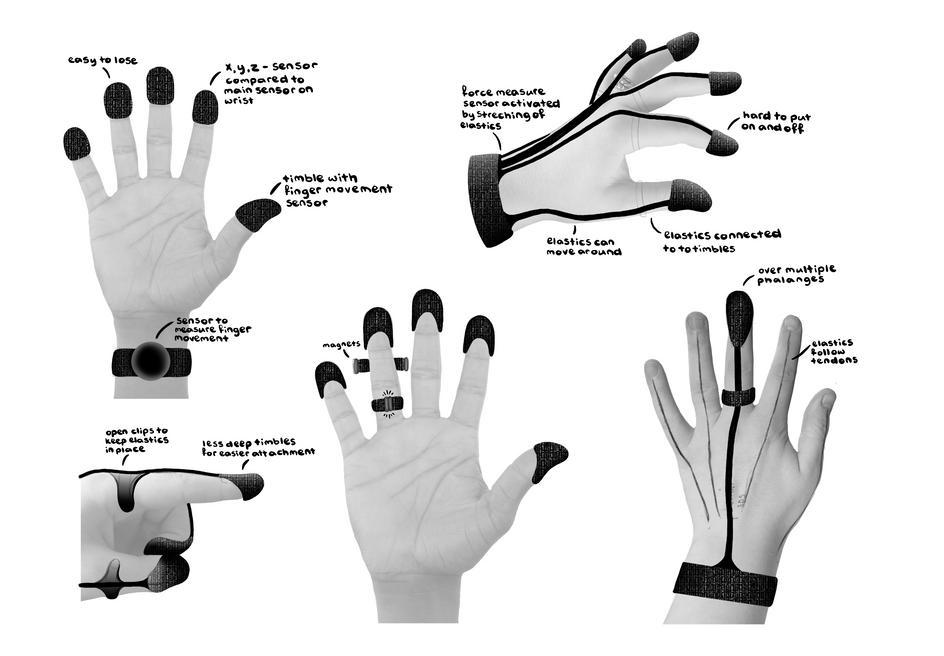
Different timle configurations
Thimbles for exoskeleton
When seeing the devices Aziz uses at home, one of the main problems is attaching the device to his fingers, the thimbles. For this, there could be three different solutions:
1. The thimbles have an angled cut at the bottom, so fingers can be put in easier
2. Halfway the thimble connector, there are bands which can be connected with magnets
3. An ¼-open ring that can be slid over the finger, which can only be removed with some pulling force
All these thimbles can be connected with an elastic material to a central point on the top of the wrist. The amount of stretching of the elastic material can then be measured by the central point on the wrist to see if the user is making progress over time.
Timbles at home
Ideation

Different working principles for wrist support
Wrist support
All fingers, except the thumb (needed for grabbing motions), should be conjoined, since it requires less complicated mechanisms to achieve stability, and it provides basic hand movements. The hand stabilization cannot be achieved without giving much support strength-wise, so here it is done by using an existing method, as seen in lamps.
There are multiple types of wrist stabilisation methods possible. One of these uses a string or band, which can be tightened with the help of a knob. The tension on the band or string will result in a movement of the hand position.
The top right solution requires the user to reposition velcro straps attached to the exoskeleton, which will hold the hand in place.
The bottom left one uses two metal plates, one with buttons and the other one with holes, in which the buttons can be pushed, this will result in a manual change of hand position.
The bottom right illustration is the same as the bottom left, but with buttons placed on a glove around the hand, which will make it less awkward to use, but a glove might bring some discomfort.
Wrist support at home
Ideation

Sensors on hand with a hand exercise example in the corresponding app
Rehabilitation app
When talking to Aziz, he indicated that he does not think that he has reached a limit to the rehabilitation of the left side of his body. At home, he already had multiple devices that would aid in training his hand to regain more strength in it. However, the motivational part in the devices was missing, leading to a situation in which the devices were used rarely.
In this idea, Aziz would wear 3 sensors per finger that will measure the exact position of the hand at all time, when activated by the corresponding app. The position of the hand is measured compared to the device on top of the hand, which is connected to the app. Within the app, animations of hand exercises will be shown, which have to be repeated by the user. When fulfilled succesfully, a circle will be filled up. When all the circles are full, the user can go to the next exercise. In the app, the user can see their progress over time, which measures how fast every exercise is done and how much they have improved. This system will give the user immediate feedback of the things they are doing, not only keeping them motivated in the moment, but also over time.
Rehabilitation devices at home
Types of hand tracking systems
Virtual Reality

Infrared tracking
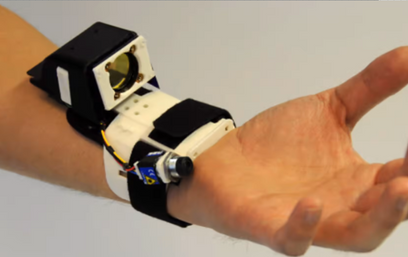
Finger tracking



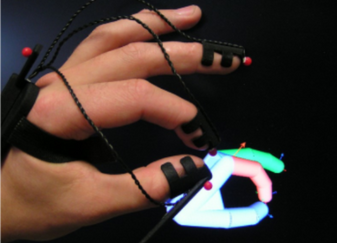

Hand tracking system at home
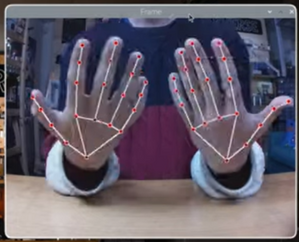
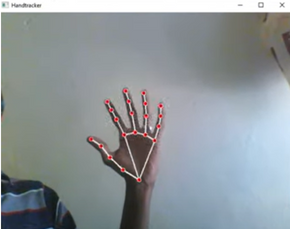
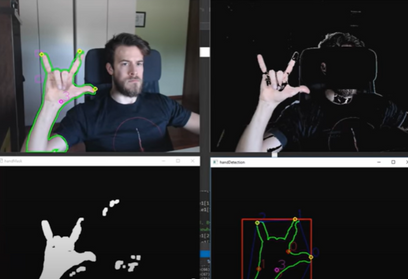
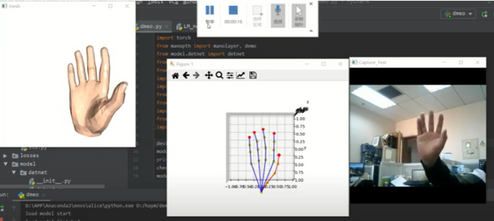

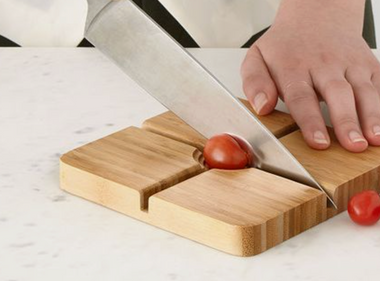




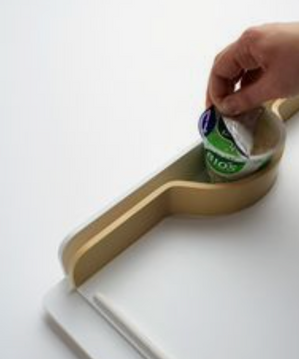

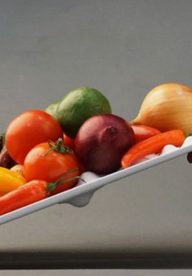


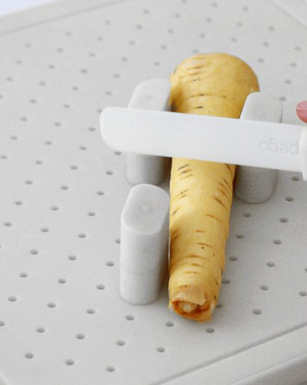
Product market research
Cutting board with spikes
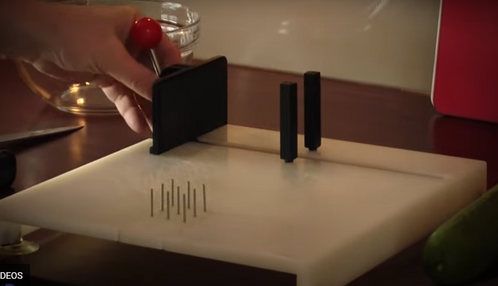
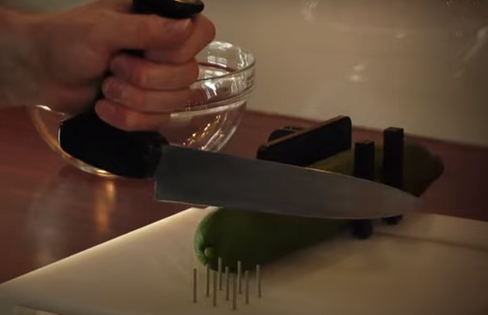

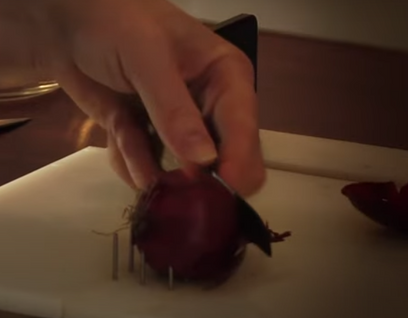
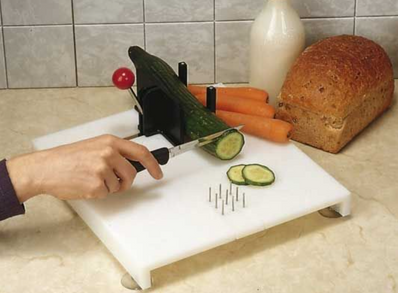
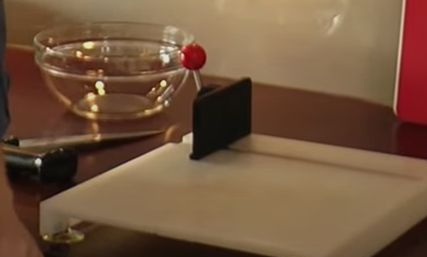
Cutting board with spikes

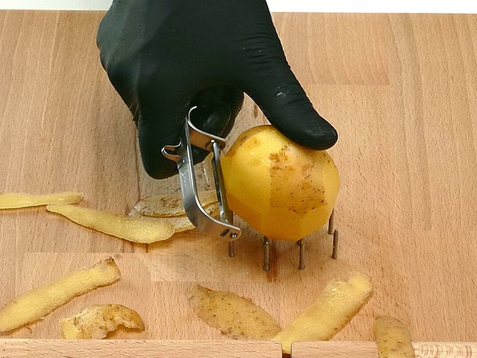




Cutting board with spikes
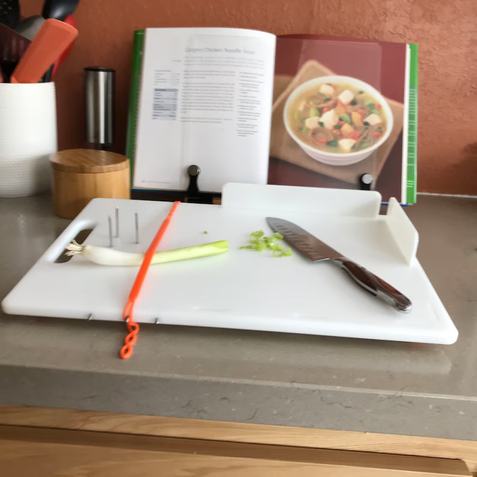

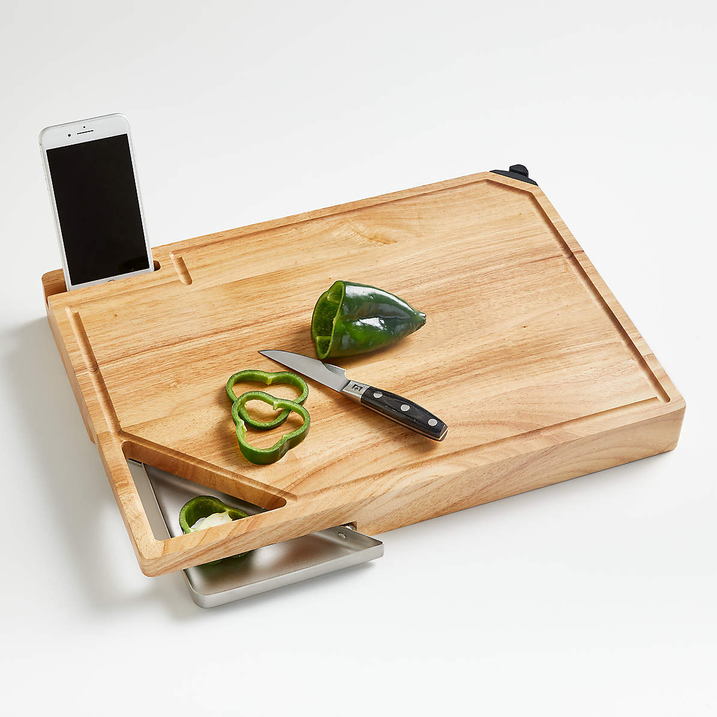
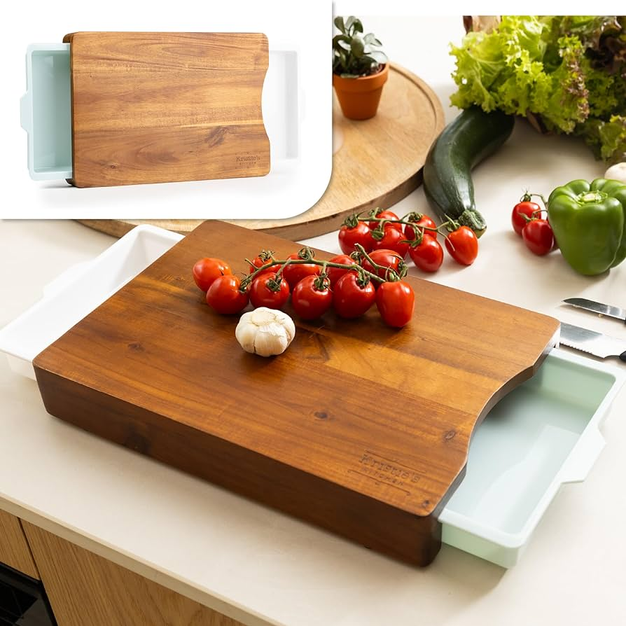
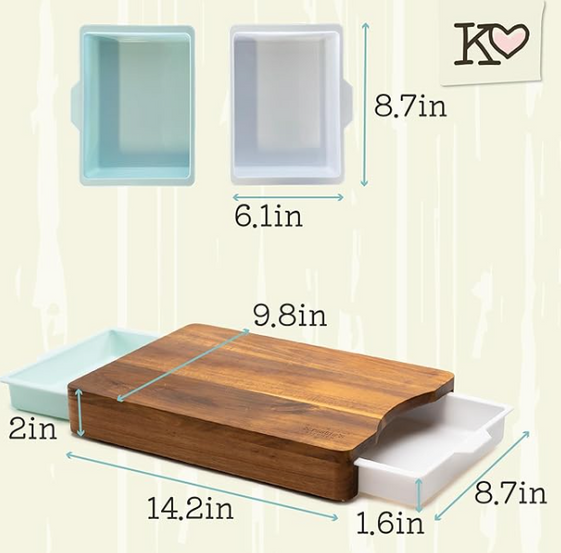


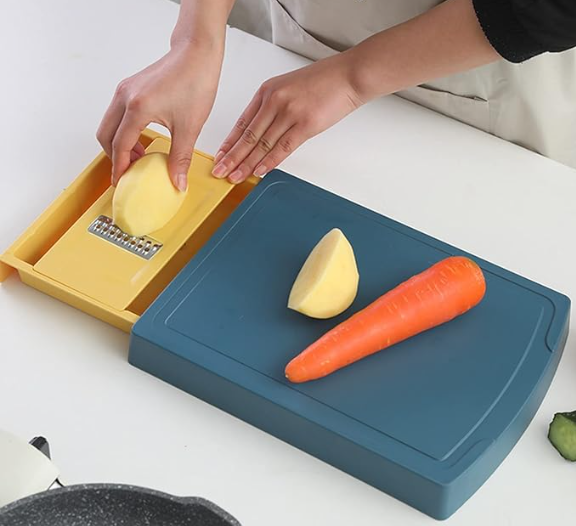



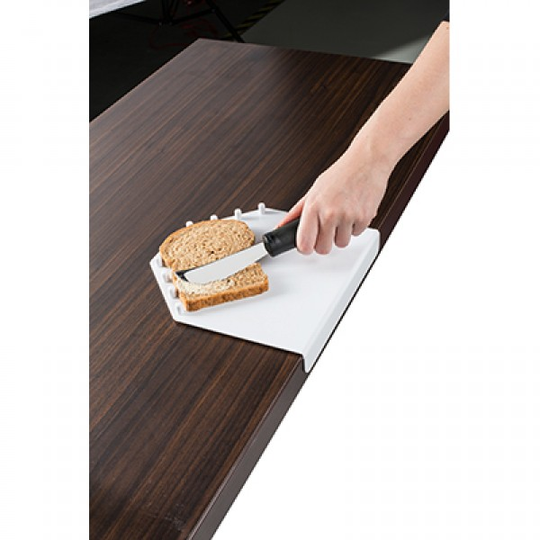
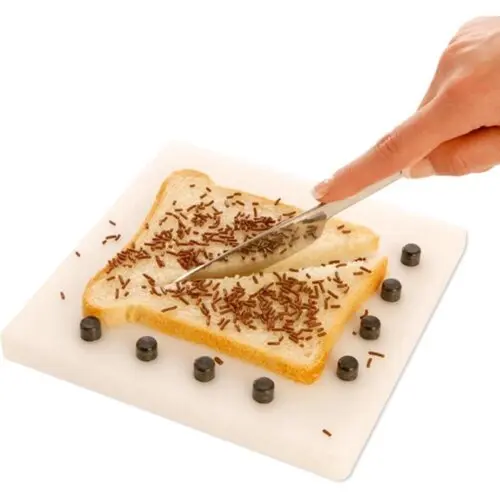
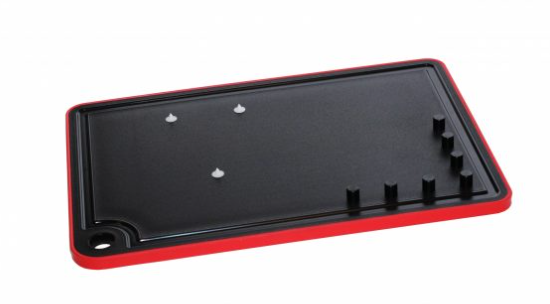

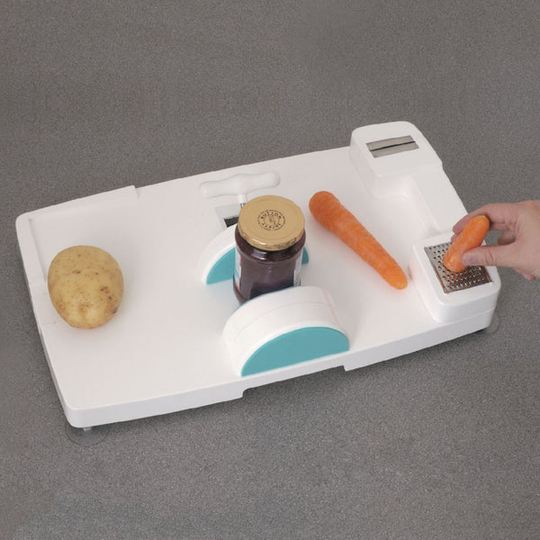
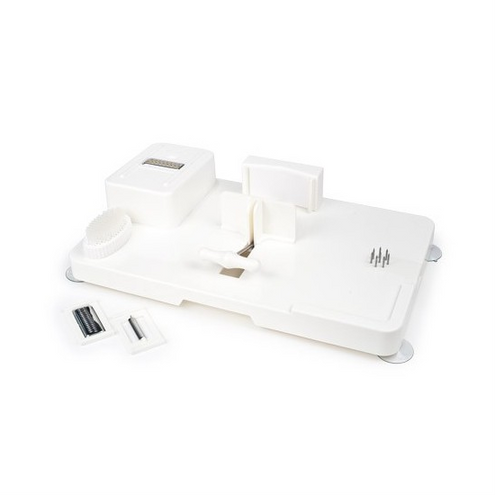


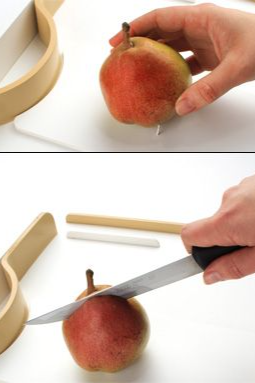
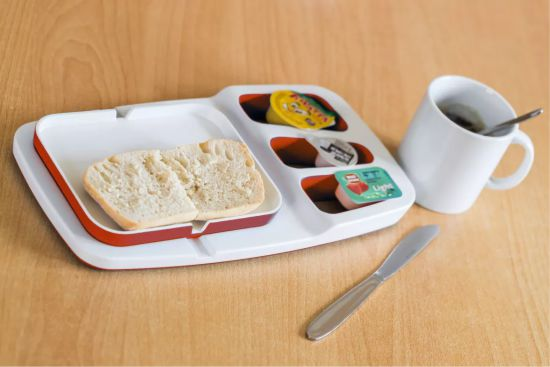
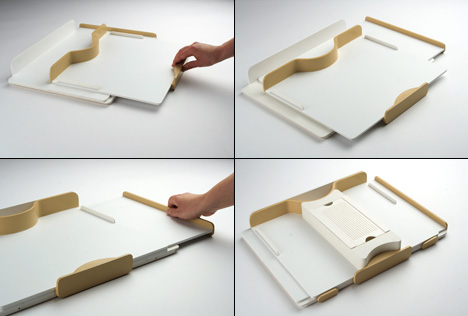




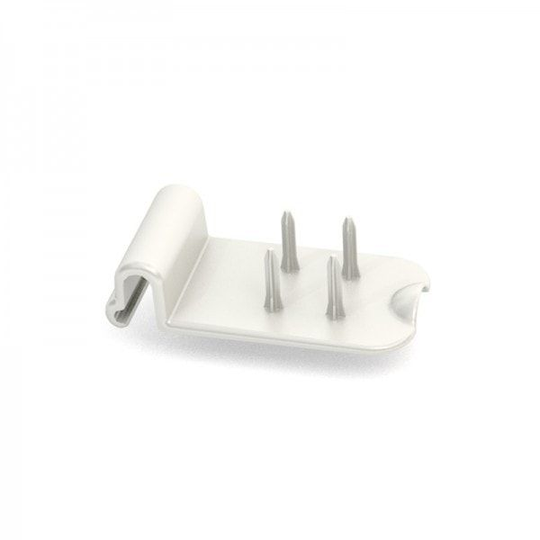


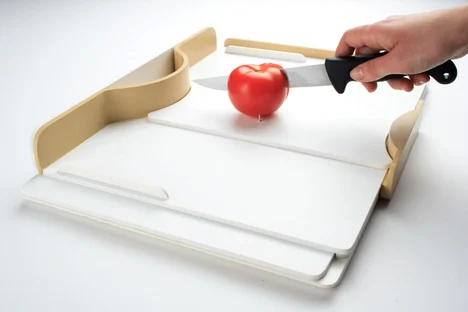
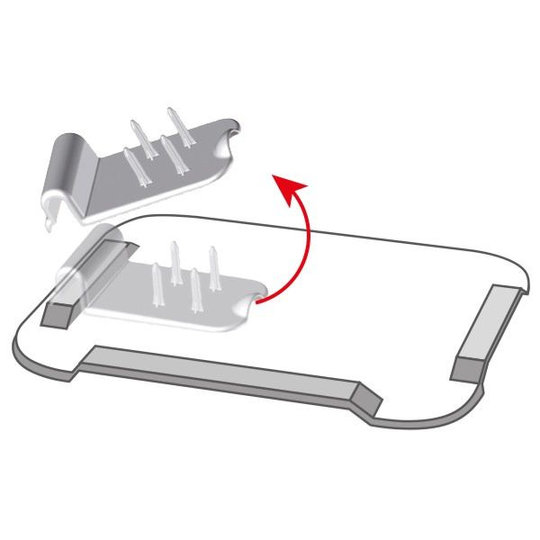
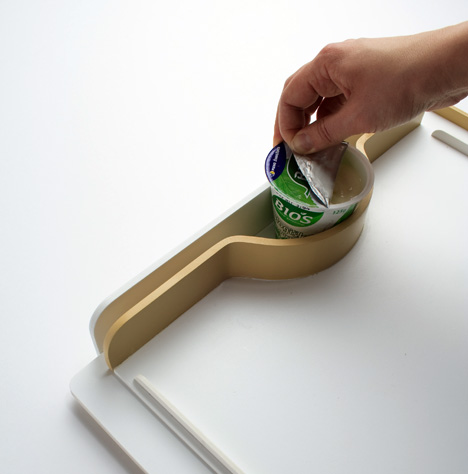


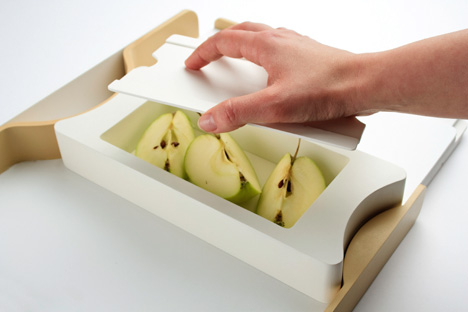
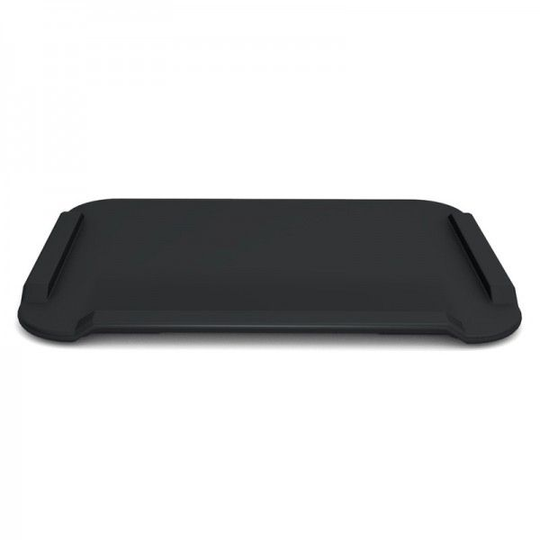
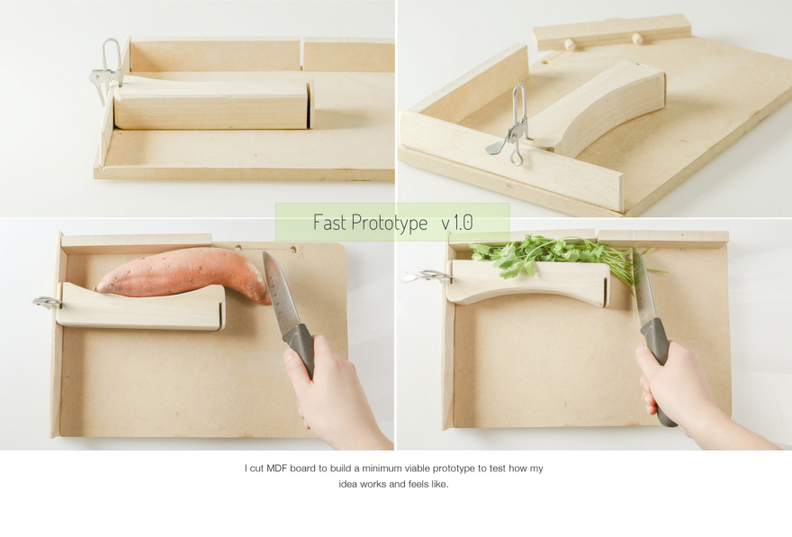
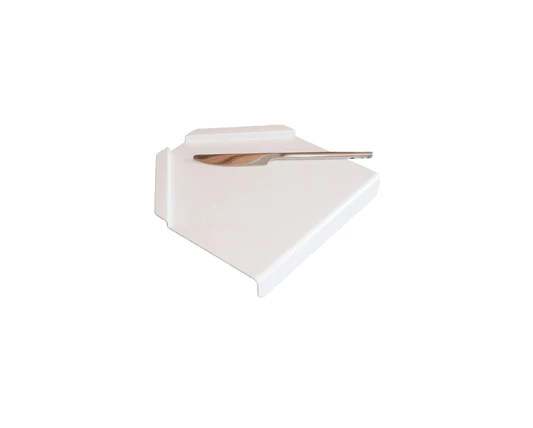
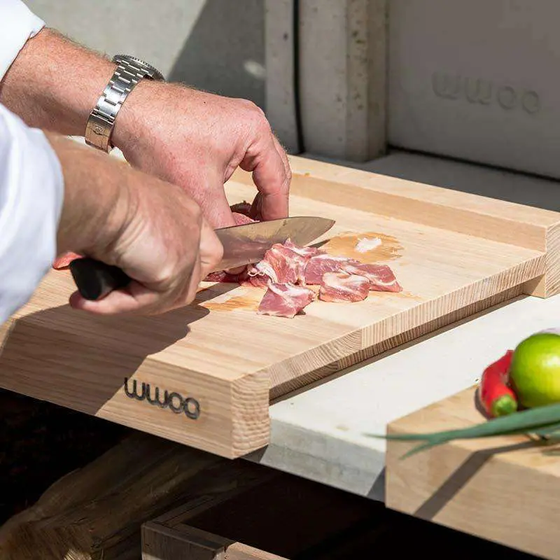
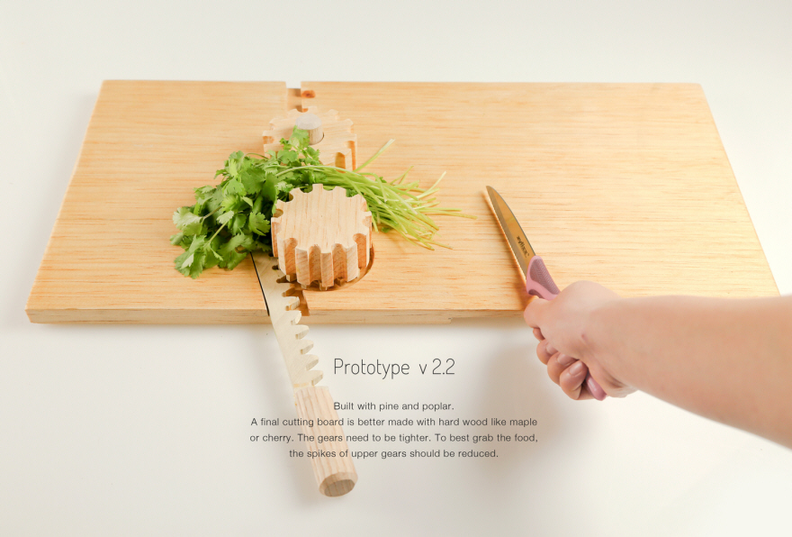
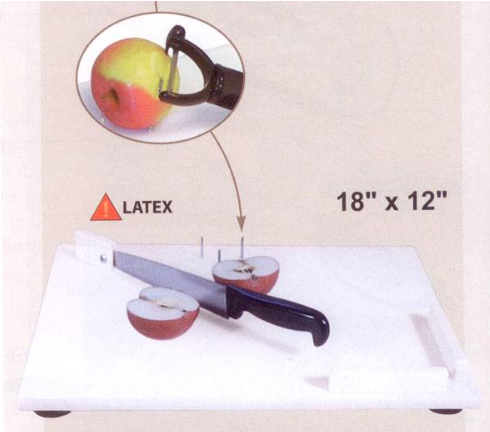
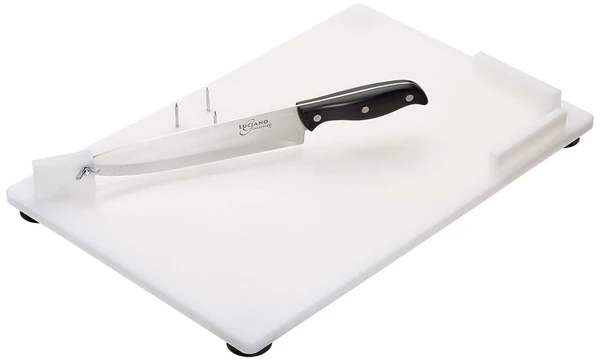
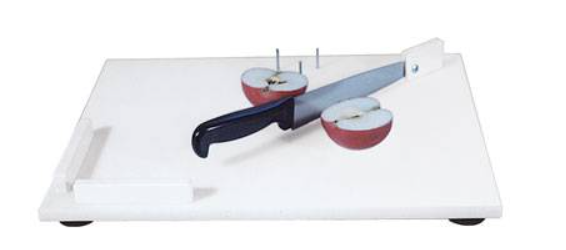
Ideation

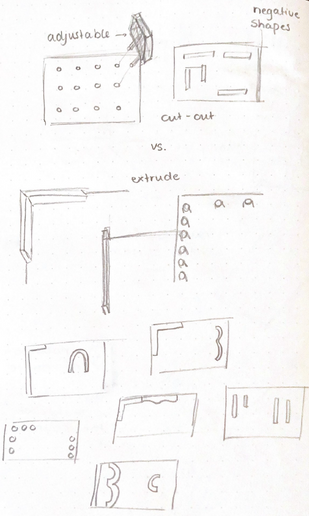
Different cutting board configurations
Cutting board
...
Cutting board at home
Concept selection
Since all the concept directions are so different from one another, giving them weighing factors based on the list of requirements would not give a trustworthy outcome. So all the concept directions were compared based on pros, cons, and frequency of use.

It is important to use a method to argue why a certain concept was chosen. Usually, a list of requirements is used to analyse which concept is more feasible and more fitting to the design goal. However, this method was not useful for this decision since the concepts vary so much from each other. That is why a list of pros and cons was made per concept to create an overview.
From this analysis it was concluded that especially the cutting board and the rehabilitation device are interesting. These concepts are complex enough and feasible. The cutting board is a far less complex end product than the rehabilitation device. Nonetheless, a less complex concept can be worked out further in detail. More extensive research can be done so that the design is developed in more depth, making it complex enough.
After defining these two concept directions, these were discussed with Aziz. It was also mentioned that the group wanted to deliver a prototype to Aziz that he can keep and that would be feasible to use at the end of the collaboration. The process of making an exoskeleton would be far too complex for the timeframe and knowledge that the team has. The end product would then be quite vague and only partially functional, which is not a problem, but it will be less satisfying to show or use.
Even though Aziz already had a cutting board that he made himself, the team felt like the existing cutting board had a lot of improvement points. For example, it slides around, and the nails used to keep food in place are not safe nor hygienic. Taking into account the opinion of Aziz and the pros and cons list, further discussion was opened, and the cutting board is the chosen cutting board.
Compared to the exoskeleton, the cutting board is the more creative and less obvious product to develop. The idea was found due to the research on home visits and conversations that were held with Aziz. The rehabilitation concept would have been a more obvious choice, not making use of the results of our research phase, namely really getting to know the needs of the user. This idea could have already been found by just knowing his disability and not his whole story.
Rehabilitation app
Cutting board

VS


Different cutting board configurations

Home
Project background
Context mapping
Ideation
Co-design
Conceptualization
Evaluation
Co-design
The co-design process is finding out what would be desired qualities of a not yet existing product, as used in the intended real-world context, seen from the perspective of the experience of the intended user, which is Aziz in this case.
14/03/2024
27/03/2024
05/04/2024
Session 2
Session 3
Session 1
Collages and ugly-beautiful scale
Short explanation
Testing prototype 1
Short explanation
Session 1
Testing prototype 2
Short explanation
Session 1
The co-design process is finding out what would be desired qualities of a not yet existing product, as used in the intended real-world context, seen from the perspective of the experience of the intended user, which is Aziz in this case.
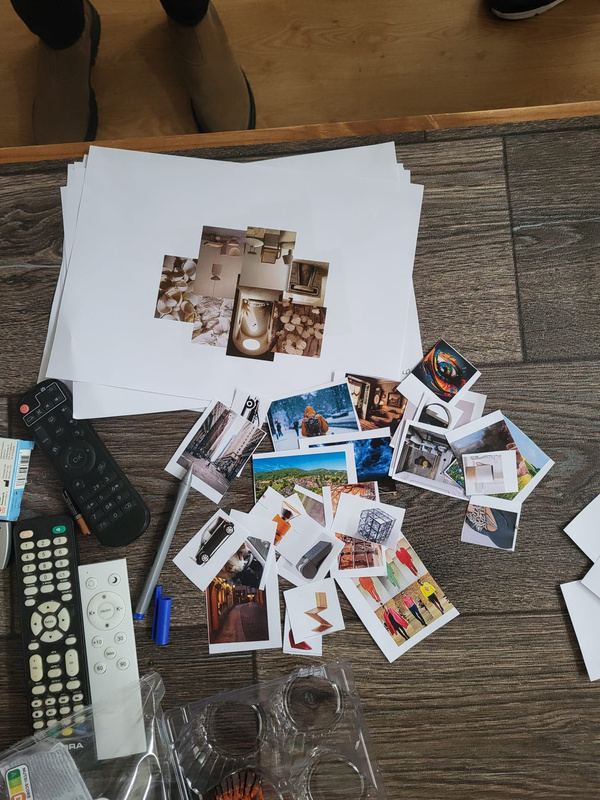
...
Visit 3: collages and ugly-beautiful scale
Collages
Session 1
One way to find Aziz his personal style, is by making different collages. These collages were all put on a table in front of Aziz, in a random order. Then a conversation was started about the collages, about what he preferred most or what he did not like at all, and why.
Collages - Beige
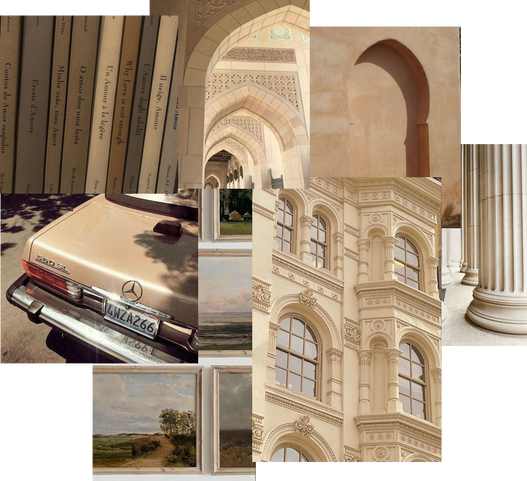
Aziz likes the car, since he had an Opel and BMW, Mercedus, Citroën CX brown, C5, XM. “umbrella on four wiels” 2cv. Aziz: ‘Desert colors, Taj Mahal, “Kwantum curtains”, relaxing colours.’

*No specific comments given
Collages - Green
Session 1

The water is very relaxing, blue colour. Aziz: ‘The window looks like a cemetery.’
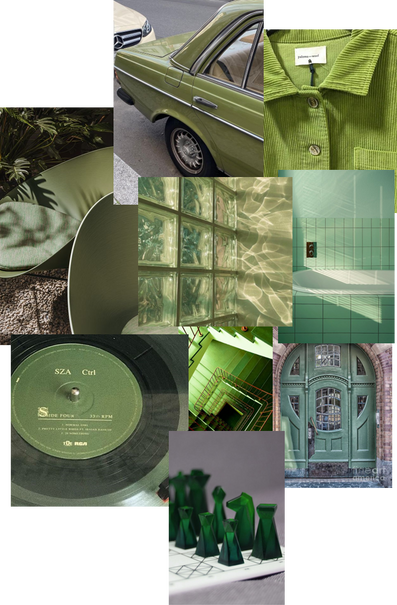
The old LP gives a nostalgic feeling. He does not want Morokan “halams” in his home, chess game would be nice in the garden

Aziz: ‘I see in one time what it should be.’
Collages - Blue
Session 1

The stained glass makes Aziz think about the church, where he used to go in the past. He liked that everyone is welcome and open in the church, everyone can do their own thing in silence, which gives him peace. Aziz also likes to light up a candle.
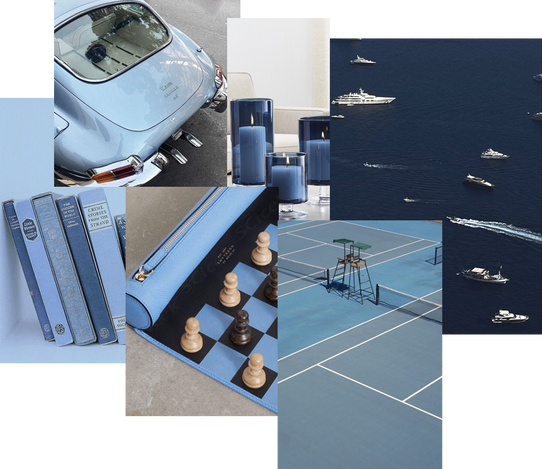
These shades of blue are more relaxing than the collage on the left. Aziz does not like to walk in the dunes, since it is quite uneven paved, making it hard to stay stable during a walk.
Collages - Conclusion
Session 1
...
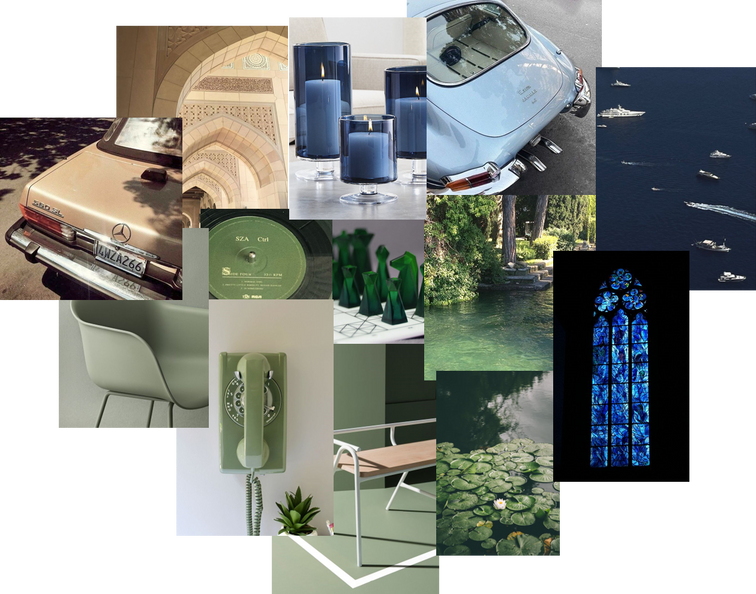
Chosen photos from collages
...
Ugly-beautiful scale
Session 1
Another way to find Aziz his design preferences, one can make use of an ugly-beautiful scale (a method used in the course Design & Styling). With this method, different images will be shown to Aziz, after which he has to label them with ‘ugly’, ‘neutral’ or ‘beautiful’. Afterwards, the group discusses with Aziz why a certain image got a certain label, which creates better insights in his preferences.
Atmospheric images




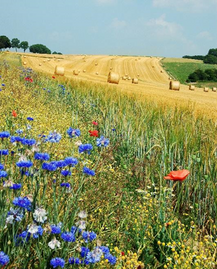

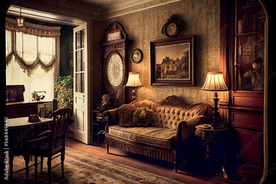
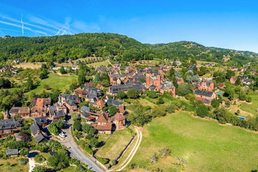


Product images
Session 1
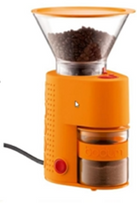
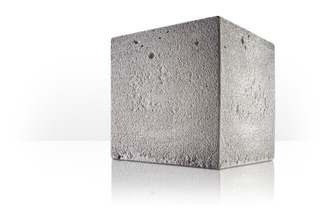

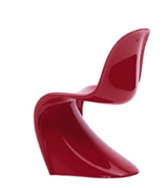

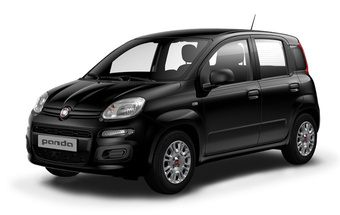
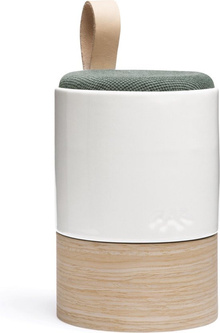
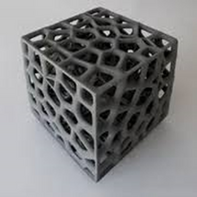

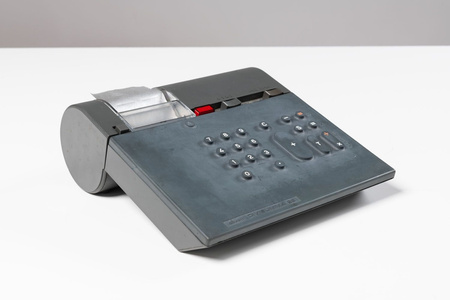
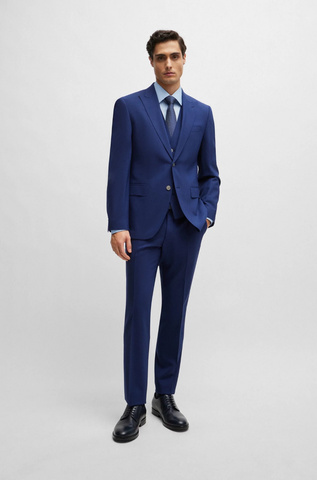
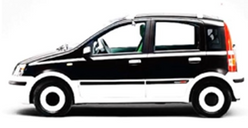
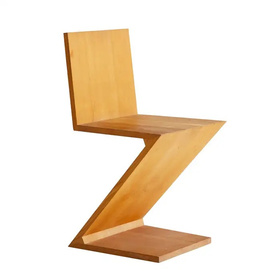
Conclusion ugly-beautiful scale images
Session 1
‘Nature, green, and clear skies’
‘We had apricot fields near the place where I grew up’
‘I used to walk a lot’




‘I grew up on the countryside in a village’
Classic interior in his old house
‘Natural material,
easy for the eye’
‘Peace’







‘Wood colour’
‘Bike basket’
‘Simple’
Aziz focusses a lot on the colours of images, and if these colours give a relaxing feeling. He gets tired of the colours bright-yellow, red, pink, and weed colour. Aziz adores natural colours and materials more. He also believes that the type of car someone owns, reflects the person's personality or what that person wants to project. About his preference for cars: does not like high class people who feel better then others. In general, Aziz mentions that he has enough junk in his home, so he would want something that he really needs.
Other notes
Home observations
Placement of the old laminate on the coffee table, makes sure that there is enough grip. Has a new basket, that is small enough so that it fits on the new bike Opens cans by placing the can between his feet and then clicking it open with his right hand New bike: has a direction indicator, so he does not have to extend his arm. The action of pulling out the battery is easy, when butting it back, bike moves, he puts his feet before the wheel so that it will not move. The bell is on the left side of the steering wheel, but he “does need it often”, probably the bell is placed on the left side since the right side is occupied by the complex break.
Other insights: Favorite season: spring, flowers, nature
Bike tour: In May bikes 25 days, every day 4 municipalities, so that he visits every municipality of the Netherlands that has at least a population of 45.000. Wants to visit his tour before he goes to Turkey. Wants to train. Needs to get used to getting up at 7 instead of 10.
New idea/concepts: Nailcutter, the handle needs to be bigger, and needs to take less force. Has back problems, since he walks off balance. Specific his lower back and his hips
Attitude: Does not dear to go to the doctor, scared that they will tell him to commit euthanasia or that they will replace his shoulder or hip with a protese. Does not have a favorite recept, sees eating as a natural need not as something to enjoy
Feels like his arm will heal even more over time. Very focused on his hand, therefore dismisses cutting board concept, also because he “already has one”
Cooking:
- Cooks every day, uses a Slowcooker
- Uses cutting board for cutting meat or for “rauwkost” for salade
- Big butter cup he can not finish on his own, that is why he buys a small one
Concepts:
- Cutting board: existing one is 36 x 27,5 cm, screws are 5 cm high. Counter available space is 40 x 83, full counteri s 60 x 83 cm. Circular cutting board has a diameter of 34 cm. The sink is 35 x 35 cm.
- Bike basket: small one fits less in. Advantage is that it is easier to go out. Can not fit old basket on new bike since the sitting is in the way. Does not need a lock.
- Preference the rehabilitation concept or glove.
Measured dimensions:
Their existing cutting board is 36 x 27,5 cm. The screws are 5 cm high. The available space on the counter is 40 x 83 cm. The full counter is 60 x 83 cm. The round cutting board has a diameter of 34 cm.
The sink is 35 x 35 cm.
Session 2
...

...
Visit 3: collages and ugly-beautiful scale

Home
Project background
Context mapping
Ideation
Co-design
Conceptualization
Evaluation
Conceptualization
Session 1
...
...
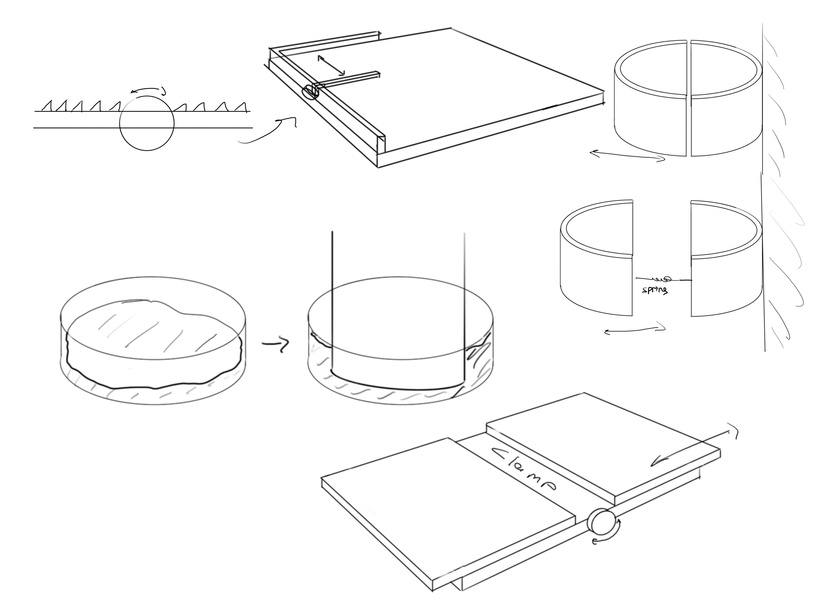
Clamping mechanism for objects
Concept development
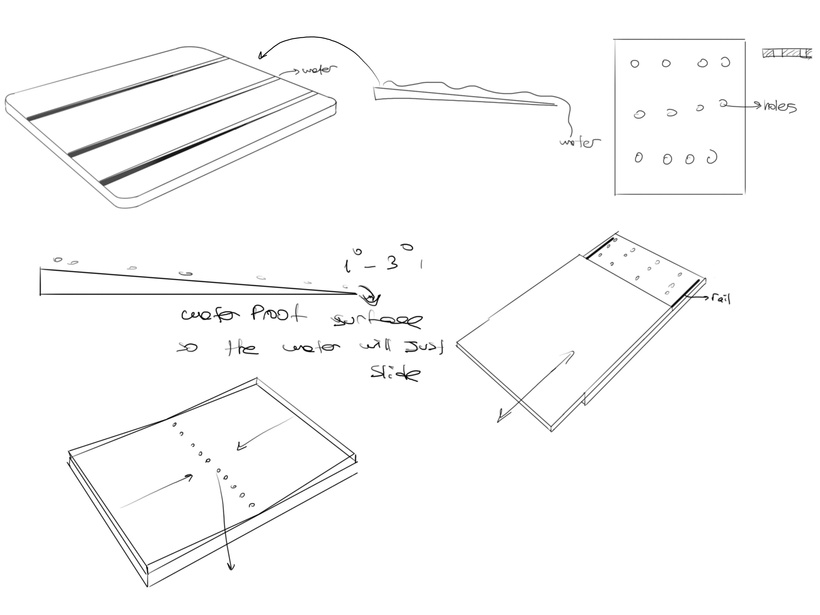
Water drainage system
Concept development
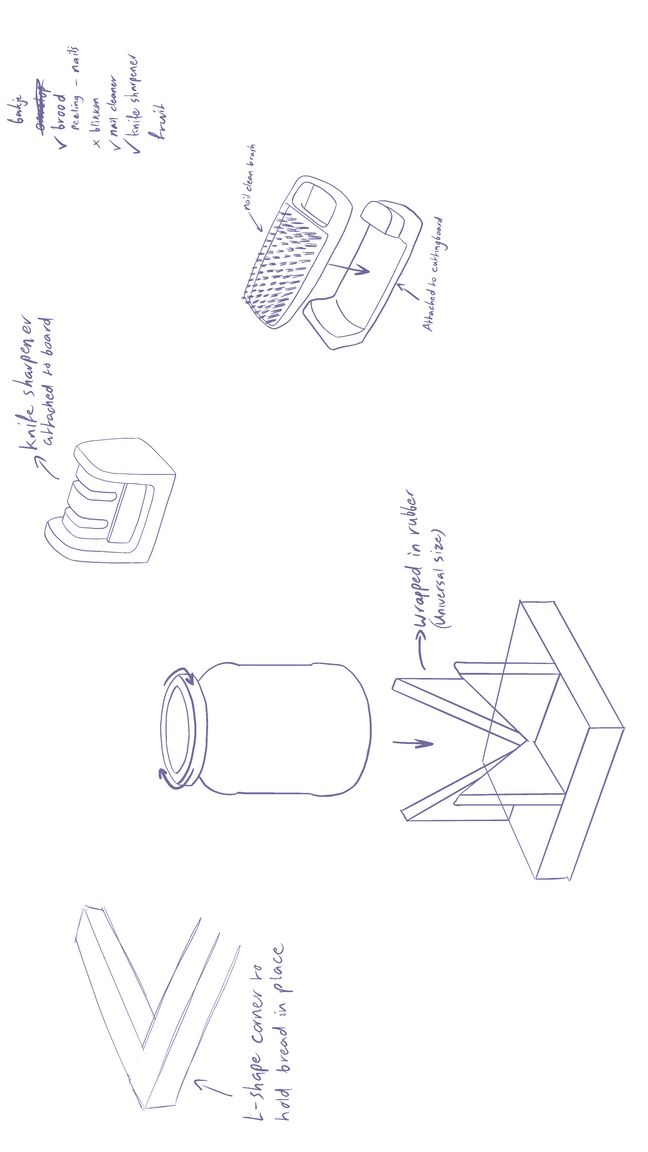
Cutting board additional parts
Concept development

Cutting board surface connection
Concept development
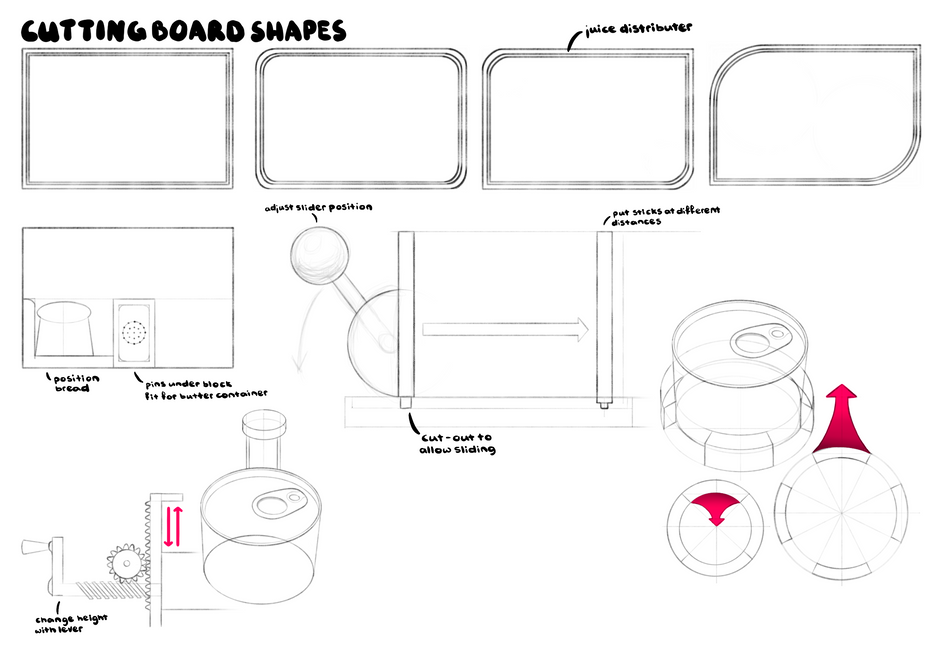
Cutting board shape / opening system
Concept development

Cutting board knife and locking system
Concept development
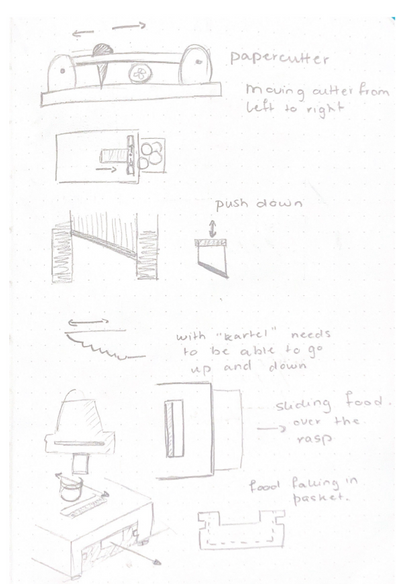
Paper cutter
Concept development
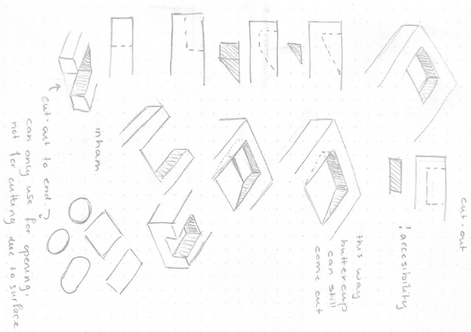
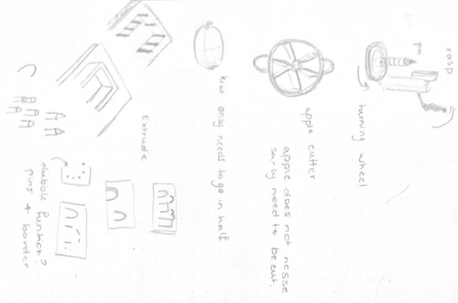
Butter container
Concept development
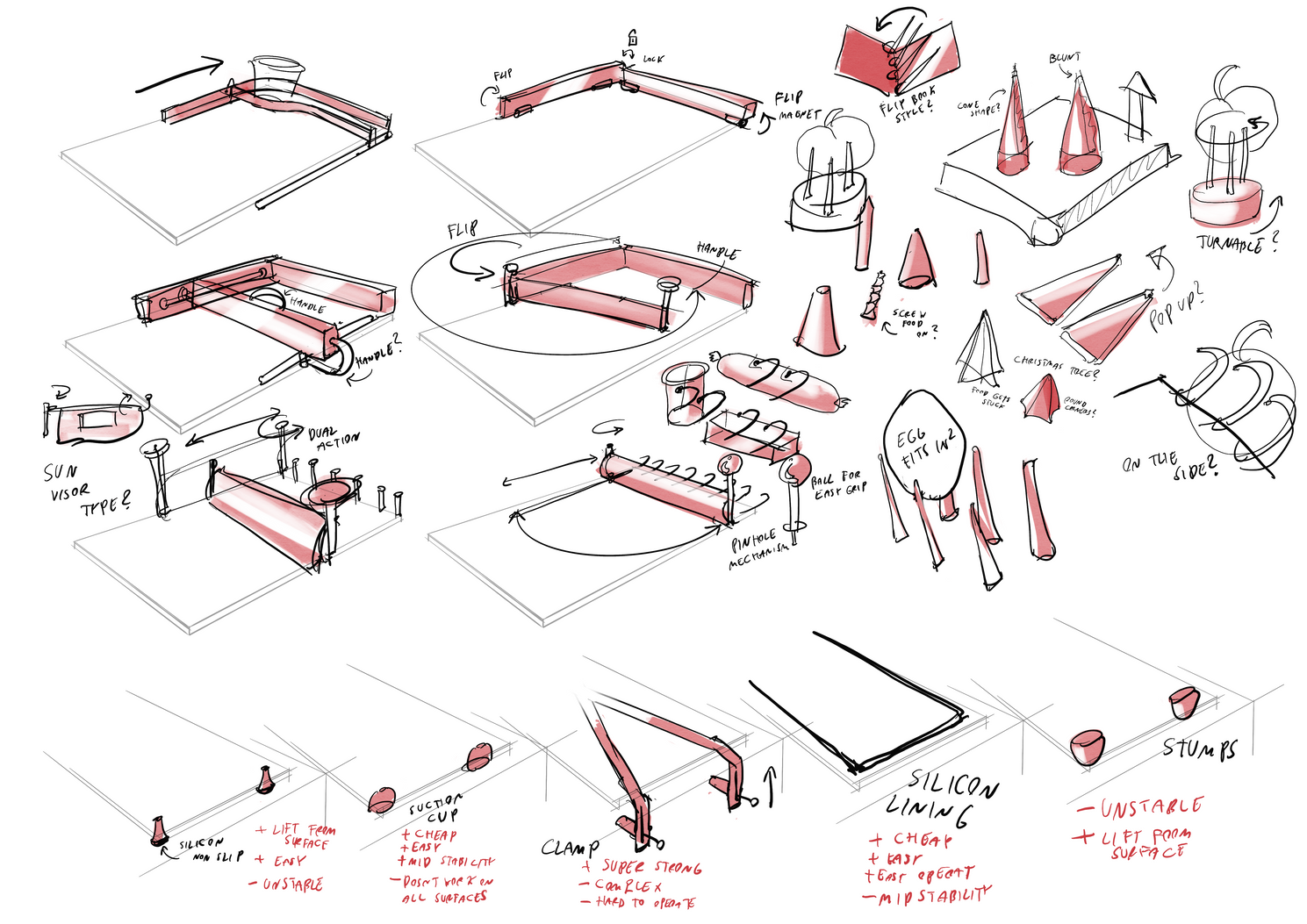
Cutting board locking system
Concept development
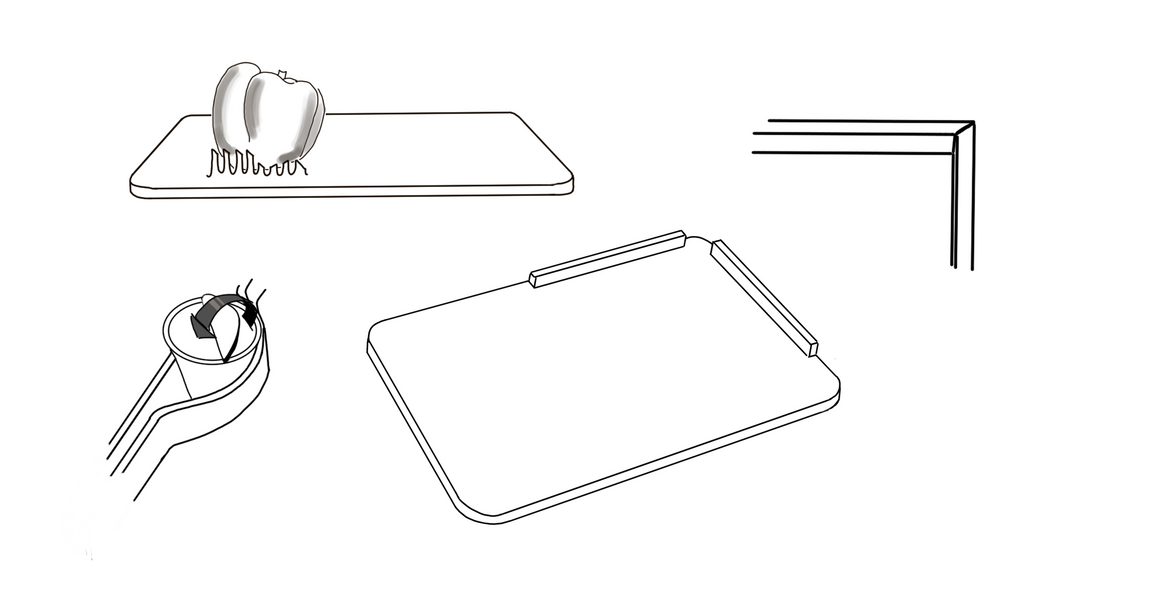
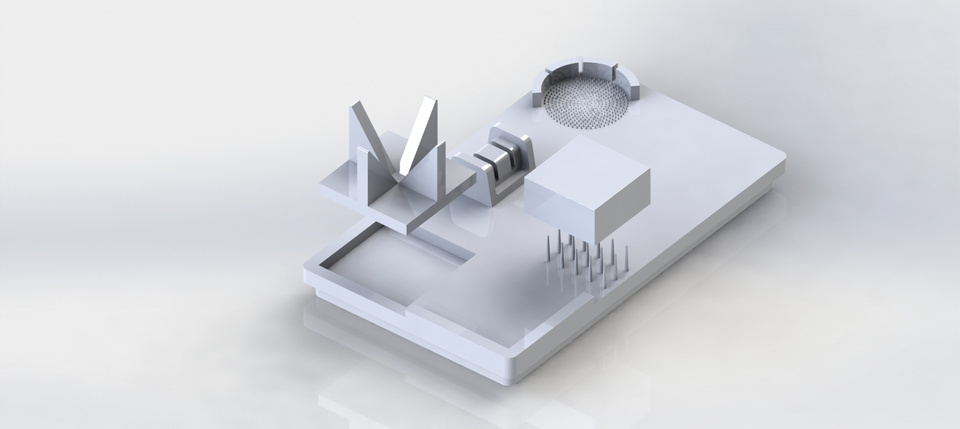



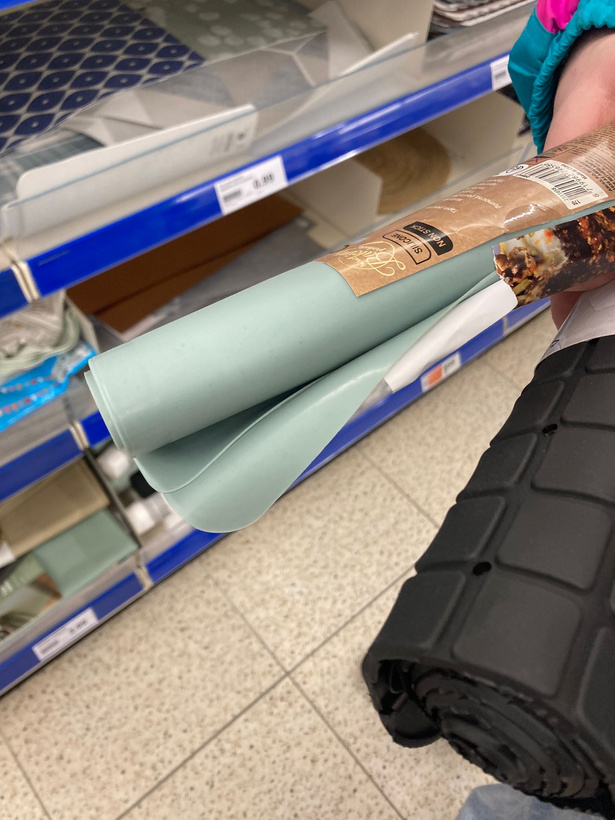
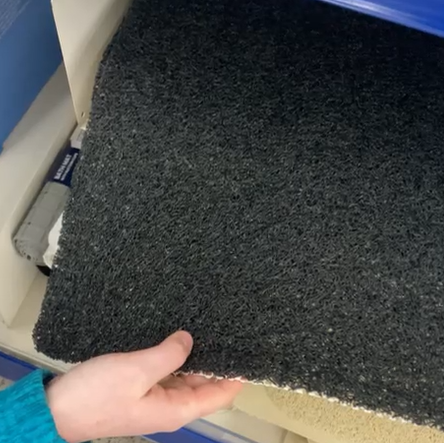

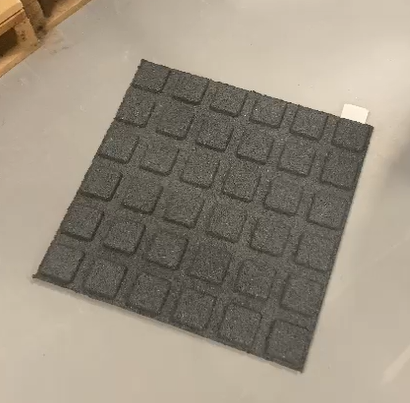
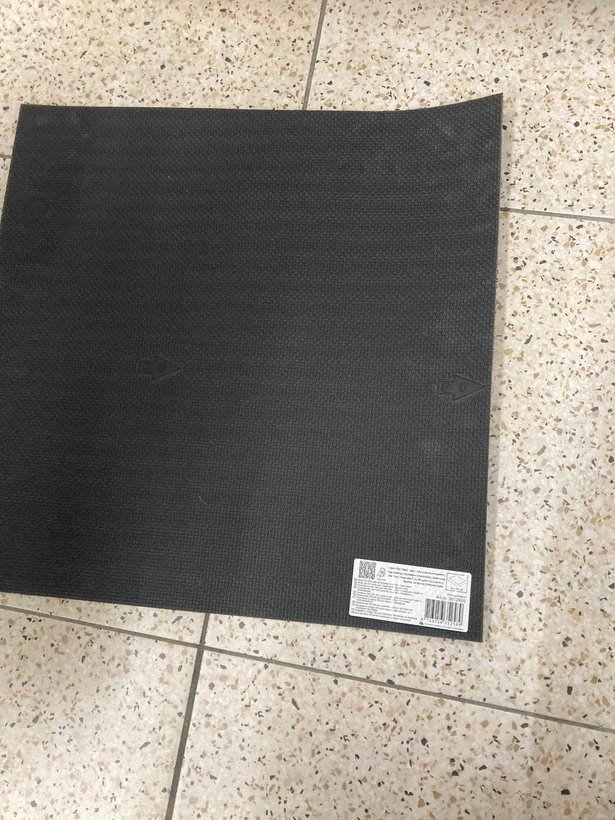
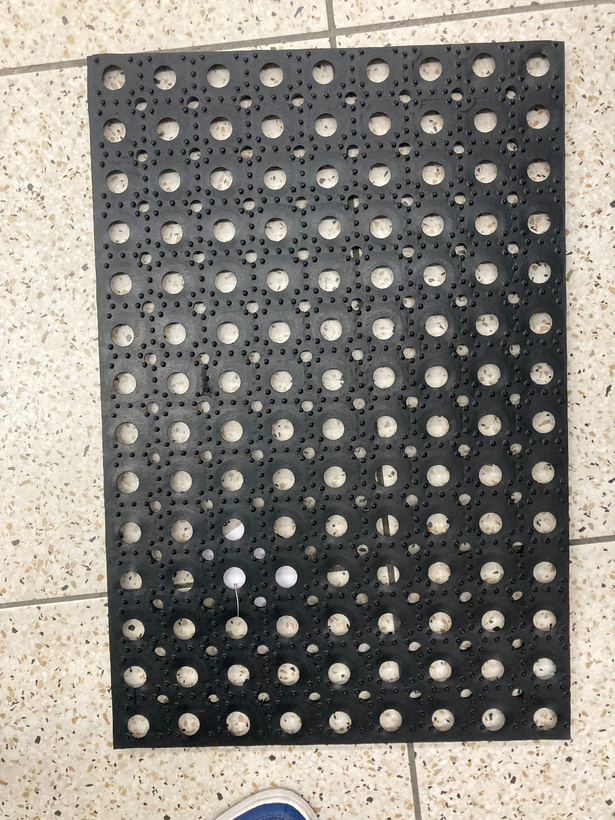


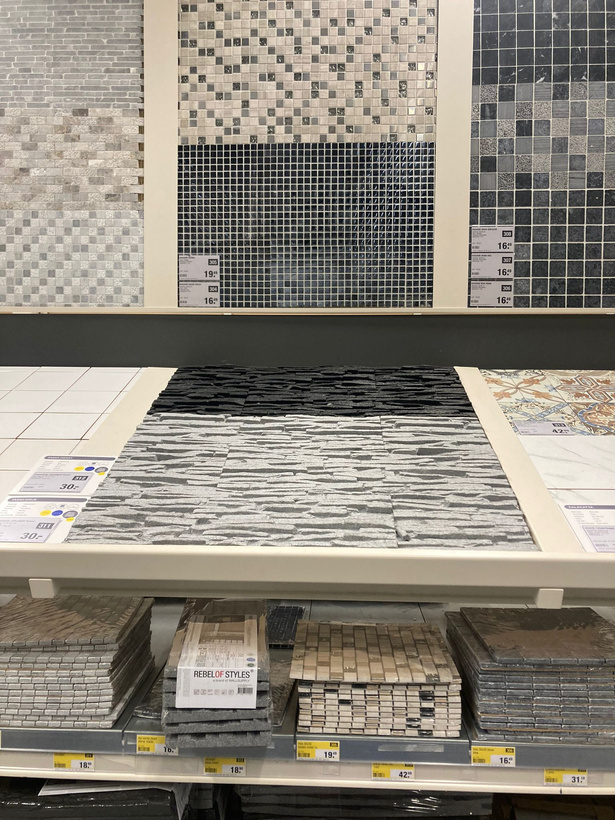
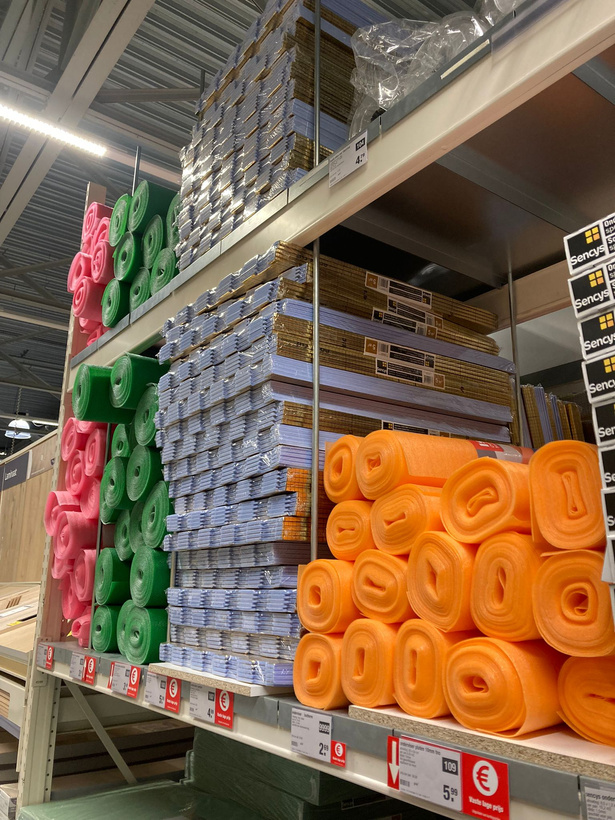

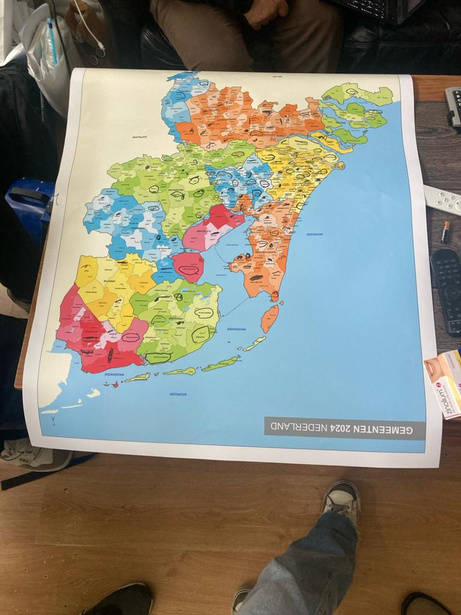


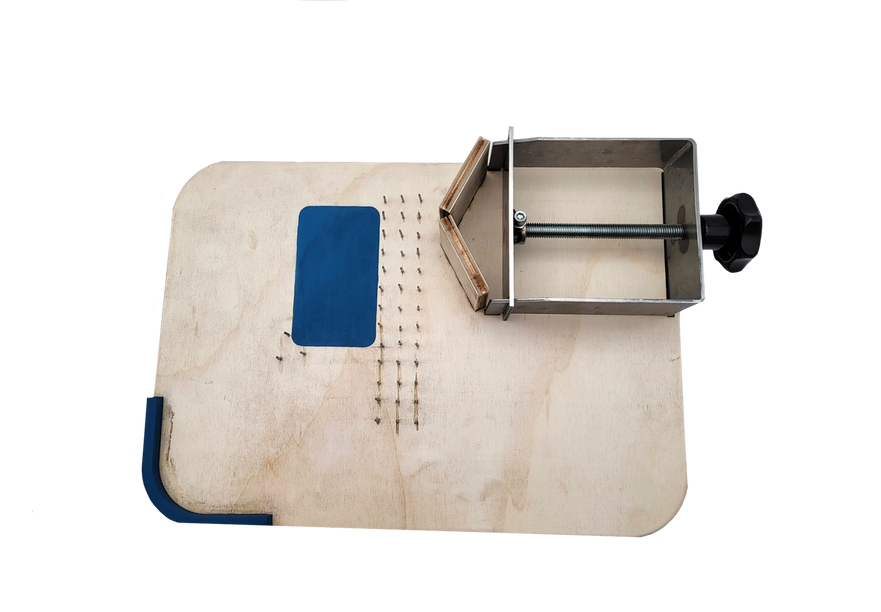


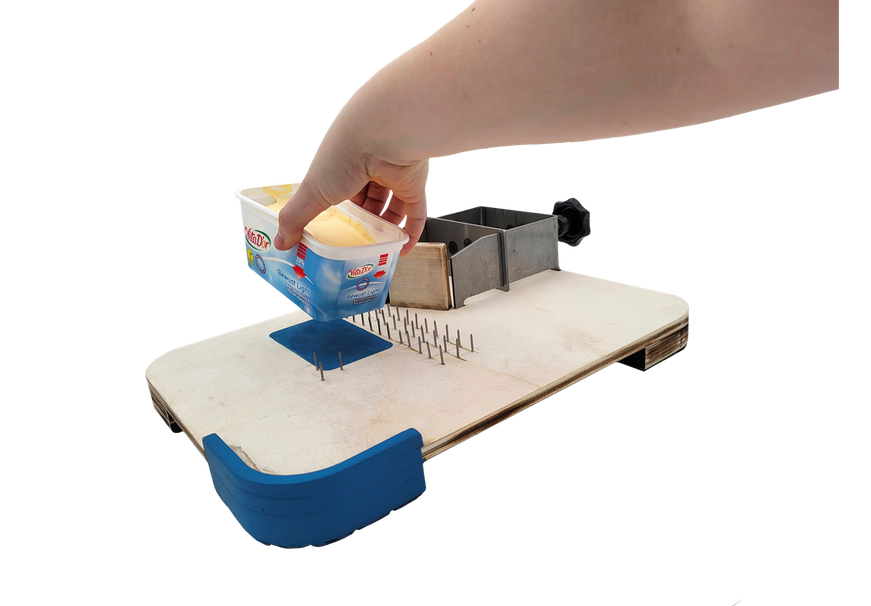
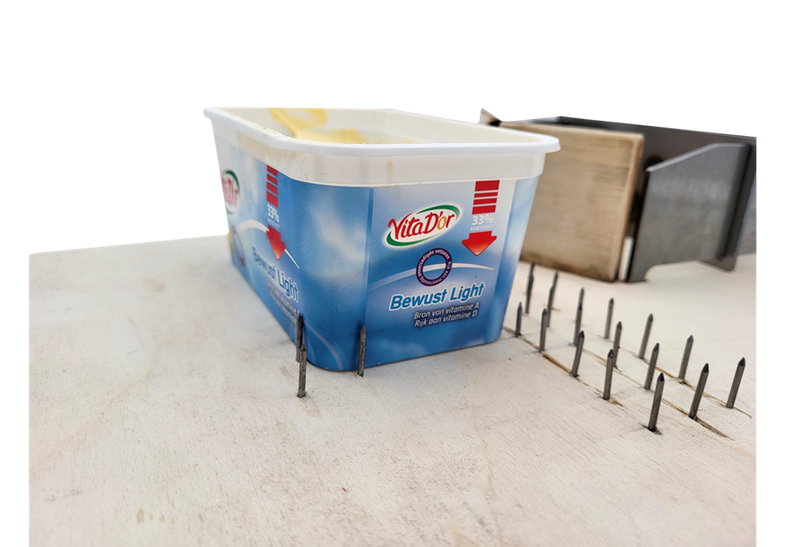
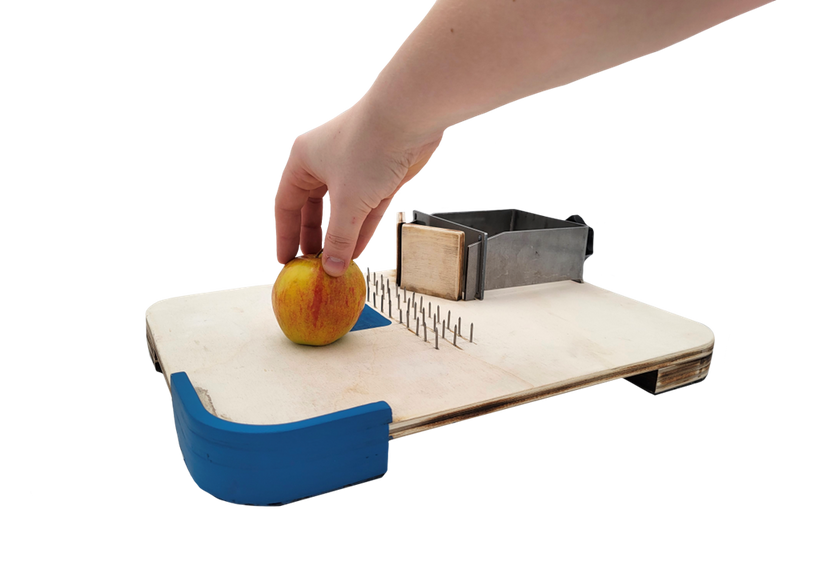


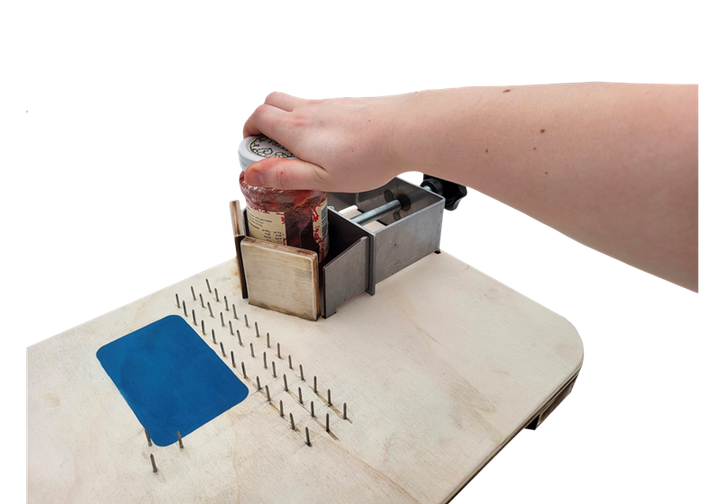

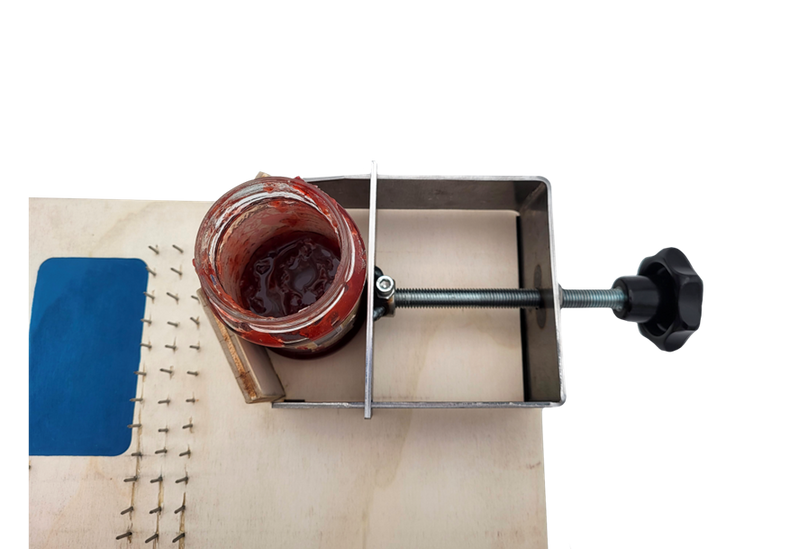

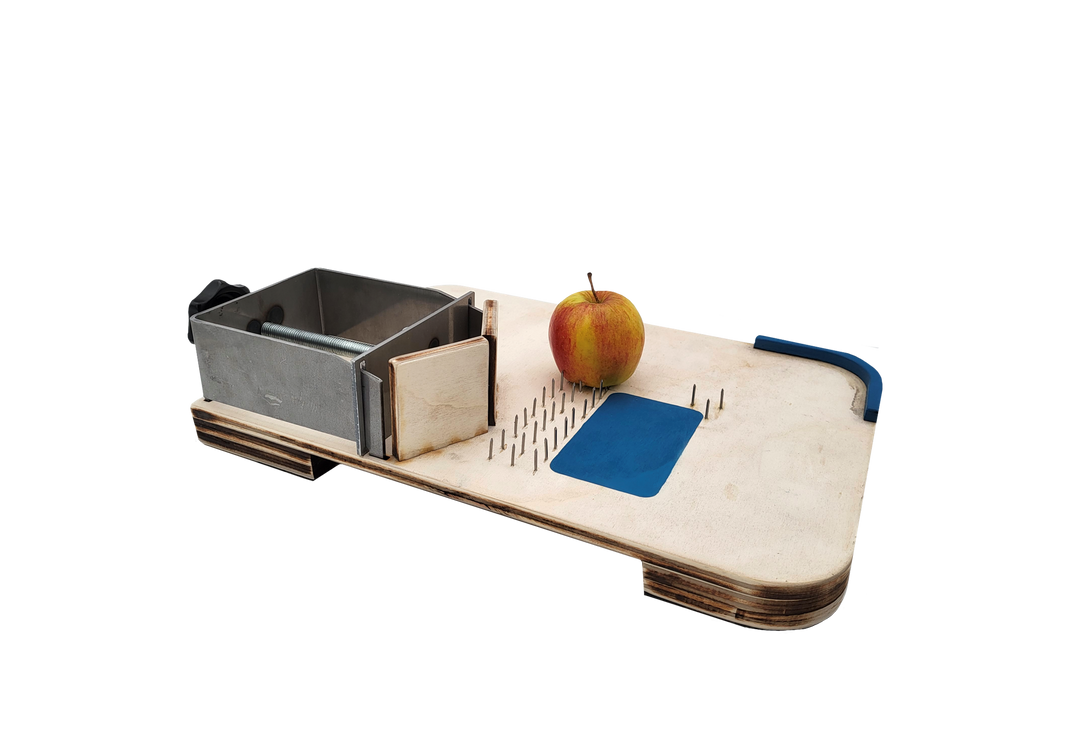
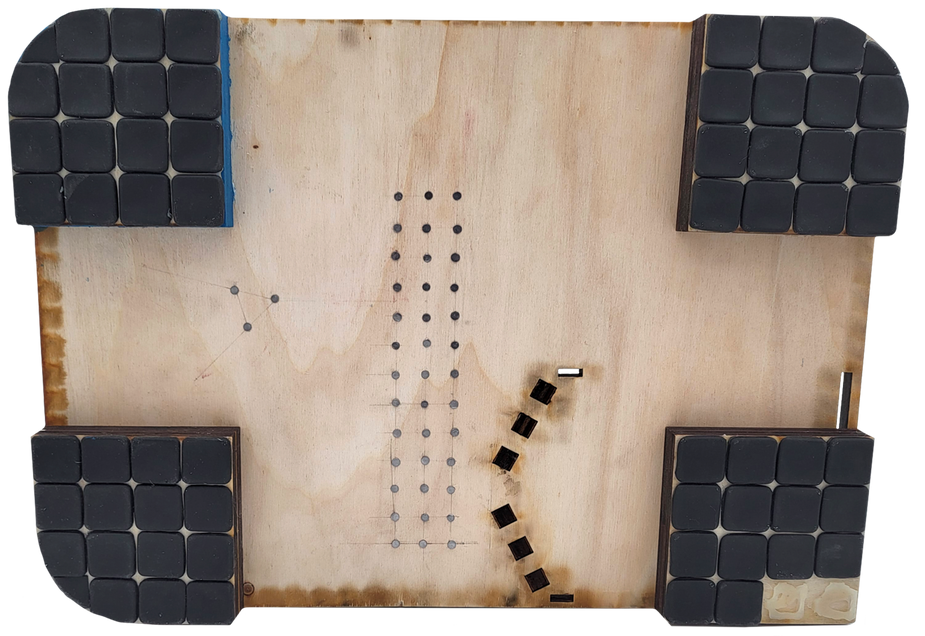


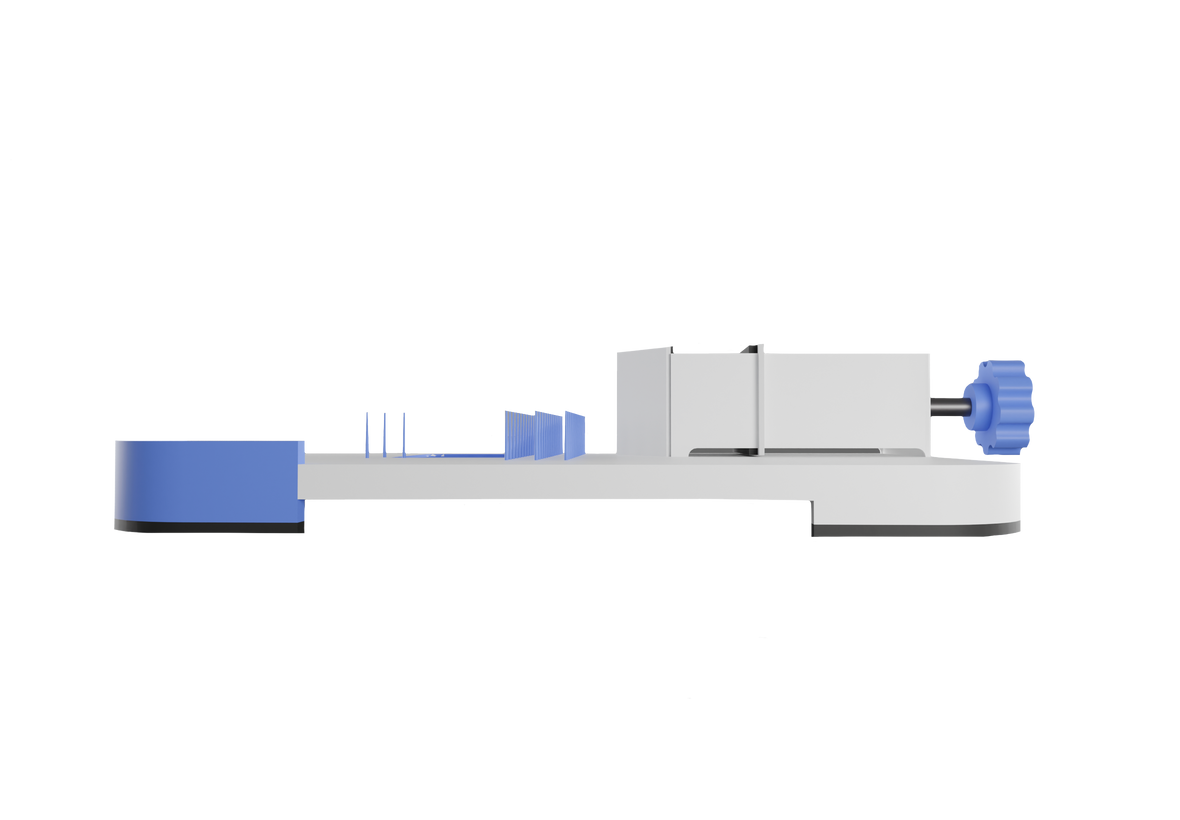
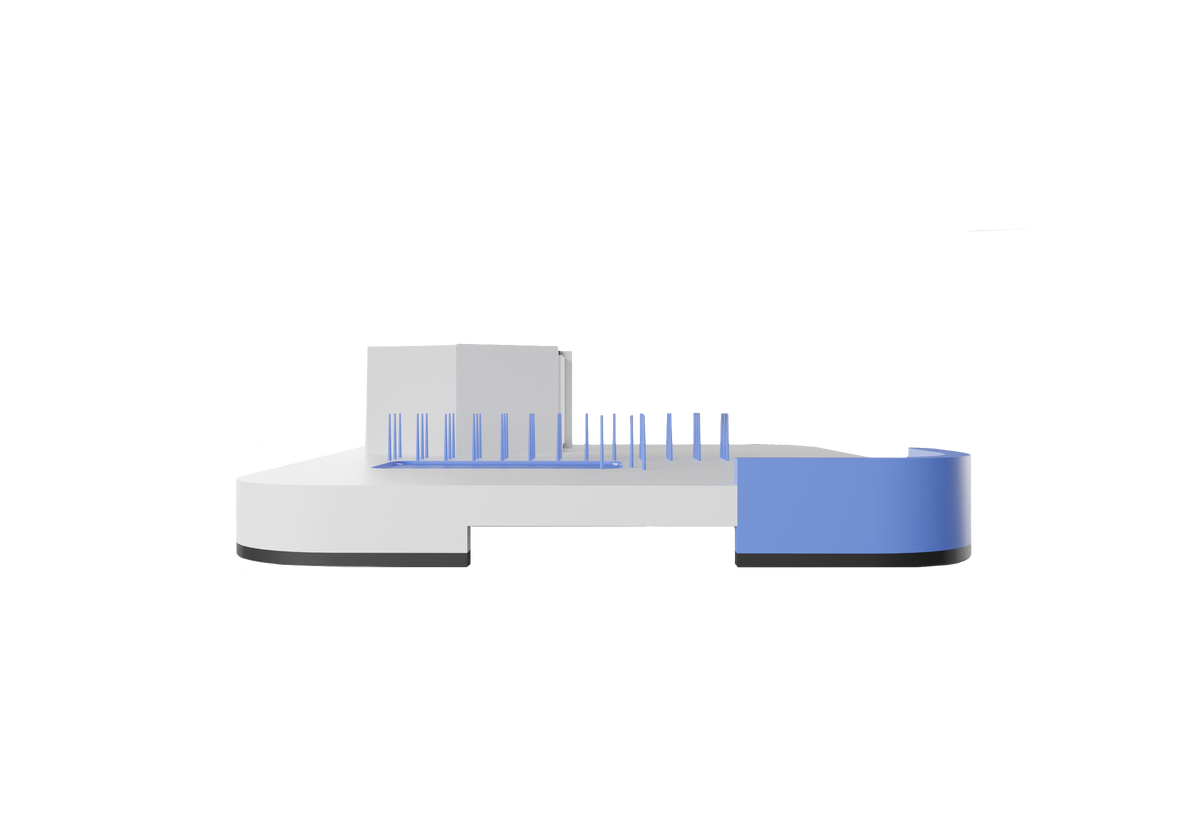




Home
Project background
Context mapping
Ideation
Co-design
Conceptualization
Evaluation
Introducing
Hemi Board

New Product
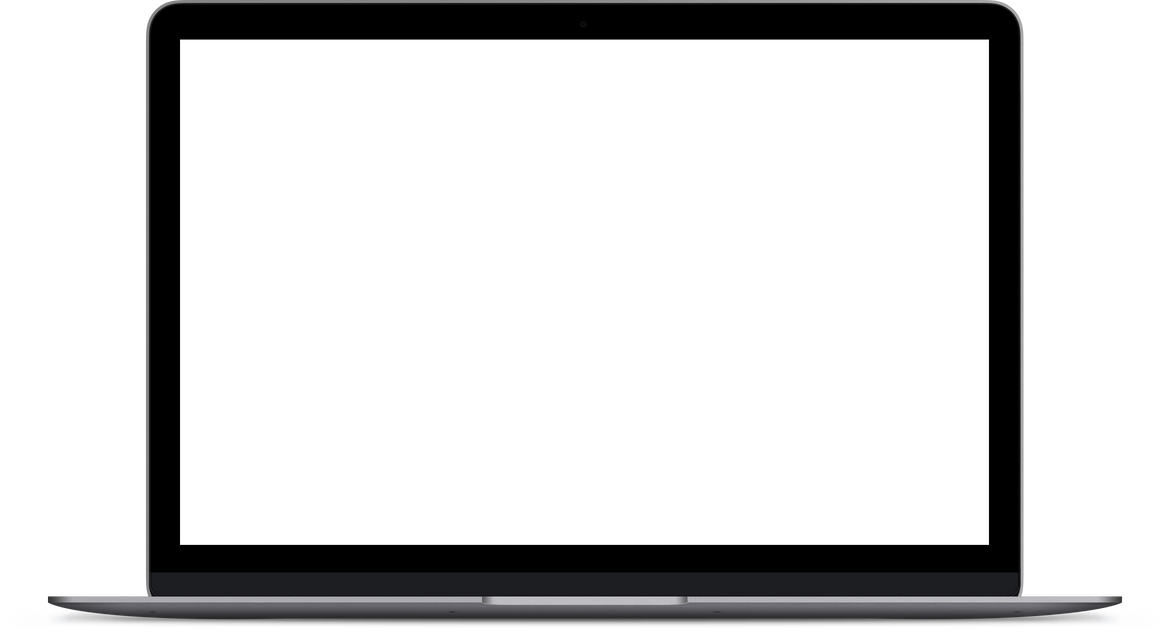

Sleek design
High resolution display
4.0 GHz processor
32 GB RAM
20 hours battery life

Step 4
Q4 2022
Future Roadmap
What are your next steps and goals? How much support do you need from investors and what will it get you?
Step 1
Step 2
Step 3
Q1 2022
Q2 2022
Q3 2022
Timeline
january
Lorem ipsum dolor sit amet, consectetur adipiscing elit, sed do eiusmod tempor incididunt ut labore et dolore magna aliqua. Ut enim ad minim veniam, quis nostrud exercitation ullamco laboris nisi ut aliquip ex ea commodo consequat.
february
Lorem ipsum dolor sit amet, consectetur adipiscing elit, sed do eiusmod tempor incididunt ut labore et dolore magna aliqua. Ut enim ad minim veniam, quis nostrud exercitation ullamco laboris nisi ut aliquip ex ea commodo consequat.
march
Lorem ipsum dolor sit amet, consectetur adipiscing elit, sed do eiusmod tempor incididunt ut labore et dolore magna aliqua. Ut enim ad minim veniam, quis nostrud exercitation ullamco laboris nisi ut aliquip ex ea commodo consequat.
april
Lorem ipsum dolor sit amet, consectetur adipiscing elit, sed do eiusmod tempor incididunt ut labore et dolore magna aliqua. Ut enim ad minim veniam, quis nostrud exercitation ullamco laboris nisi ut aliquip ex ea commodo consequat.
